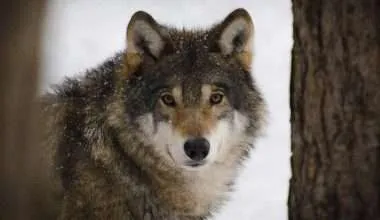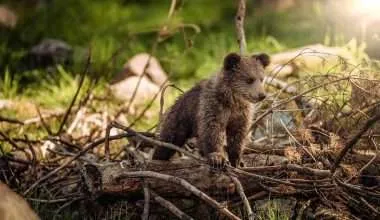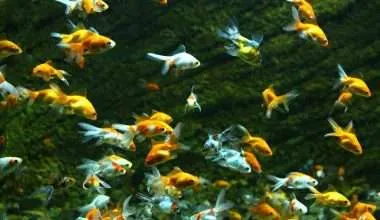Table of Contents Show
Monkeys are interesting species with many special capabilities. Scientists consider them to be the primate cousins of humans with many similarities.
With more than 250 different species, they range from the humongous 119-pound mandrill to the cute 4-ounce pygmy marmoset – and many other types of monkeys.
They have large brains and are known for their intelligence and inquisitiveness.
Let’s get to know more about different types of monkeys, their behavior, the threats to their survival, and which ones are suitable to be kept as pets, and some very interesting facts!
Here’s a surprising one; there are No monkeys native to North America!
Old World Monkeys vs New World Monkeys
Monkeys are divided into two substantial categories, namely the New World Monkeys and Old World Monkeys.
There are a few distinguishing features between Old World Monkeys and New World Monkeys.
New World monkeys
The New World Monkeys are commonly found in Central America, Mexico, and South America. They are mostly tree dwellers and come down for food or to find shelter.
Old World Monkeys
Found in Asia and Africa, Old World Monkeys are capable of climbing on trees but do spend more time on the ground. You’ll find them in various habitats, especially rainforests.
Some are born with pouches helpful for storing food. Unlike New World Monkeys, these don’t have gripping (prehensile) tails and some species even have short tails.
List of 30+ Different Types Of Monkeys
Alright, Let’s start!
1. Olive Baboon (Papio Anubis)
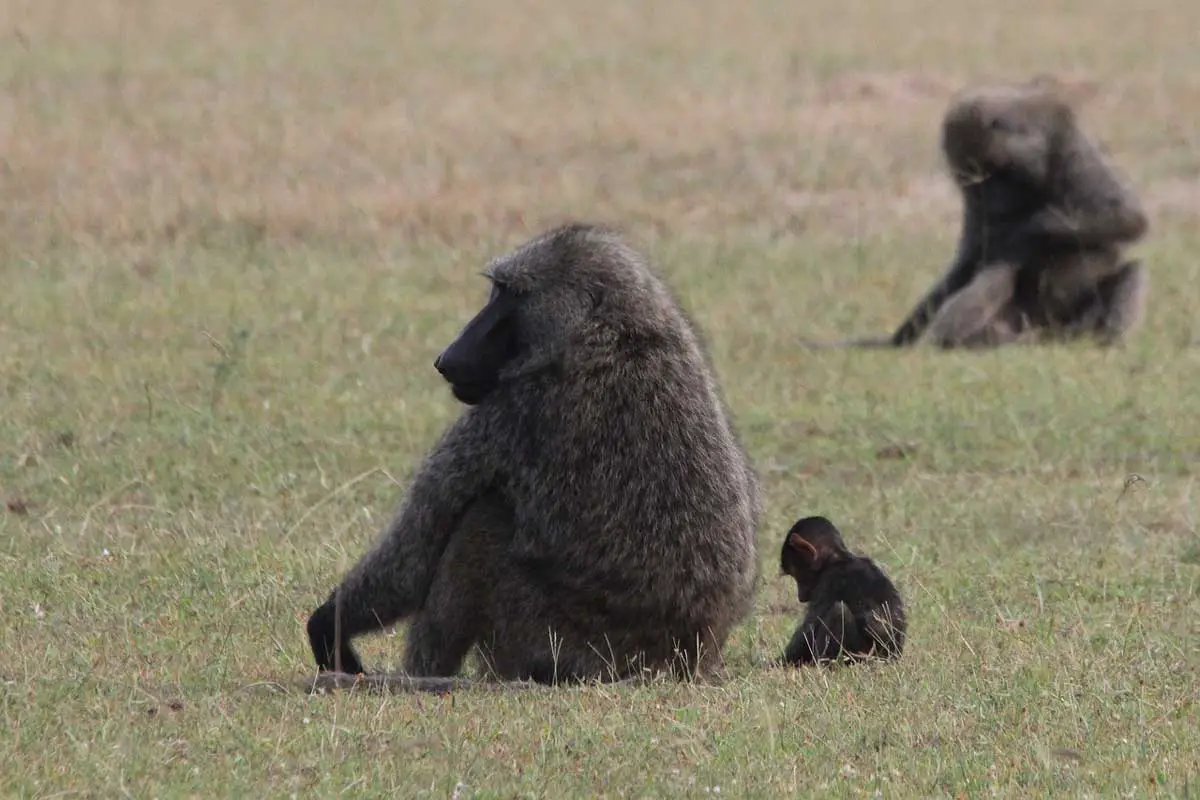
The Olive Baboon, or Papio Anubis, is an Old World monkey type that is distributed widely throughout 25 countries, from the Arabian Peninsula to Africa.
They are usually called Savanna monkeys or Anabis baboons.
These monkeys are highly adaptable and survive in a diverse range of habitats, from riverine forests and open grasslands to enchanting valleys.
Behavior of Olive Baboons
- They can be good climbers when they’re running from a predator.
- They have sharp teeth and powerful jaws for eating many small animals and plants.
Diet of Olive Baboons
They are omnivorous (eat plants and animals both), surviving on eating whatever they can find.
Their feeding habits also vary with the season, except in Uganda, where plants are accessible all year.
Threats to survival
The olive baboon is marked ‘Least Concern’ according to the International Union for Conservation of Nature (IUCN, 2020) list.
In any case, Olive baboons are often trapped or shot by farmers for raiding their crops.
Natural predators of Olive Baboons include hyenas, crocodiles, raptors, wild dogs, and big cats.
2. Spix’s Night Monkey
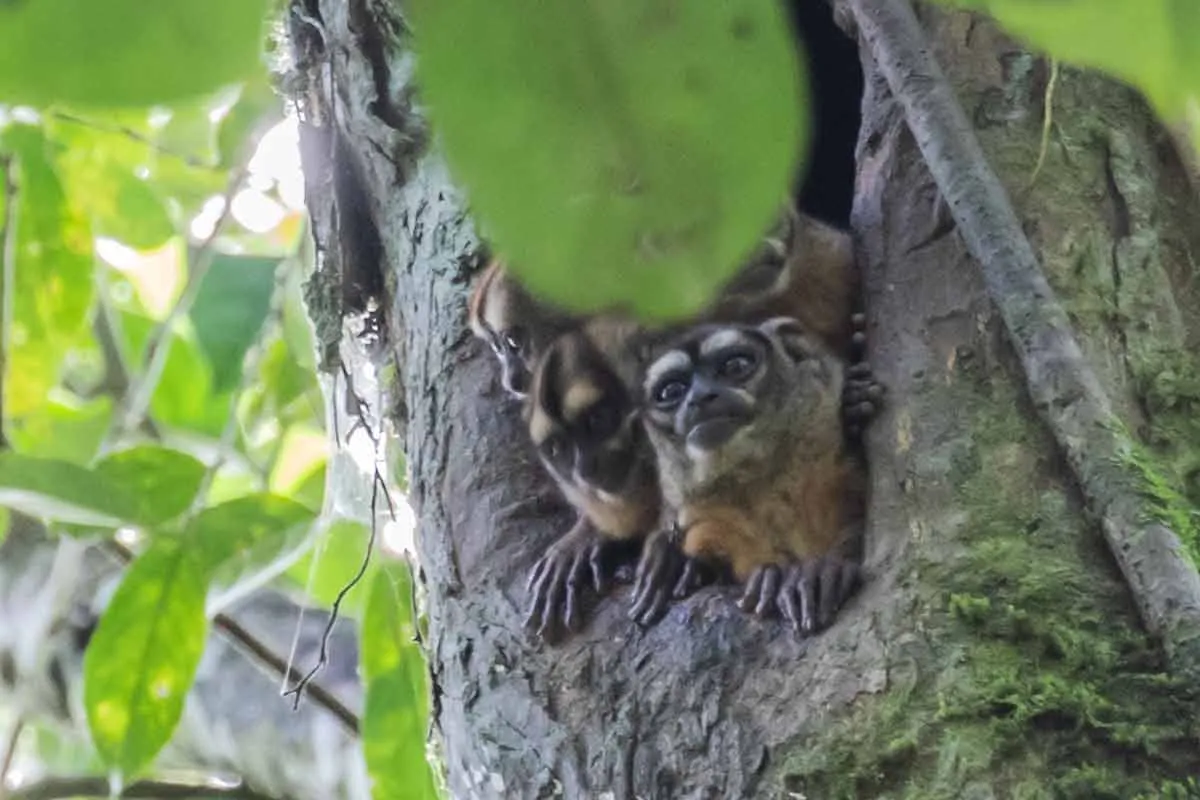
Night monkeys (also known as owl monkeys) can be found in forests of Peru, Brazil, Ecuador, Colombia, and the Amazon River.
Behavior of Night Monkeys
The Spix’s night monkey or Aotus Vociferans love to stay awake during the night.
These monkeys wake up after sunset and go to sleep before sunrise.
During the daytime, this New World species rests in trees. They are sometimes found sharing their nest with different mammals.
A little surprising since these are considered the most aggressive amongst other types of monkeys.
A well-known fact is that they have limited color vision and can only perceive gray, white, and black colors. I’d say this makes them well-adapted to the nightlife!
Diet of Night Monkeys
Owl Monkeys eat fruits along with leaves, flowers, and nectar. They like small and ripe fruits, which they look for in trees. Night monkeys catch insects out of air or from tree branches.
This is unlike most primates who search for insects in crevices and holes. The common insects they feed on are beetles, spiders, beetles, moths, and cockroaches.
All of these insects are active during the night, making it easy for the Spix’s monkey to hunt.
Threats to survival
They are of least concern when it comes to endangerment due to a large population and wide range spread throughout the world.
They are, however, being affected by increasing deforestation along rivers in Ecuador and oil exploitation and exploration in Peru.
Other reasons include poaching for use in medical research.
3. Golden Snub-Nosed Monkey
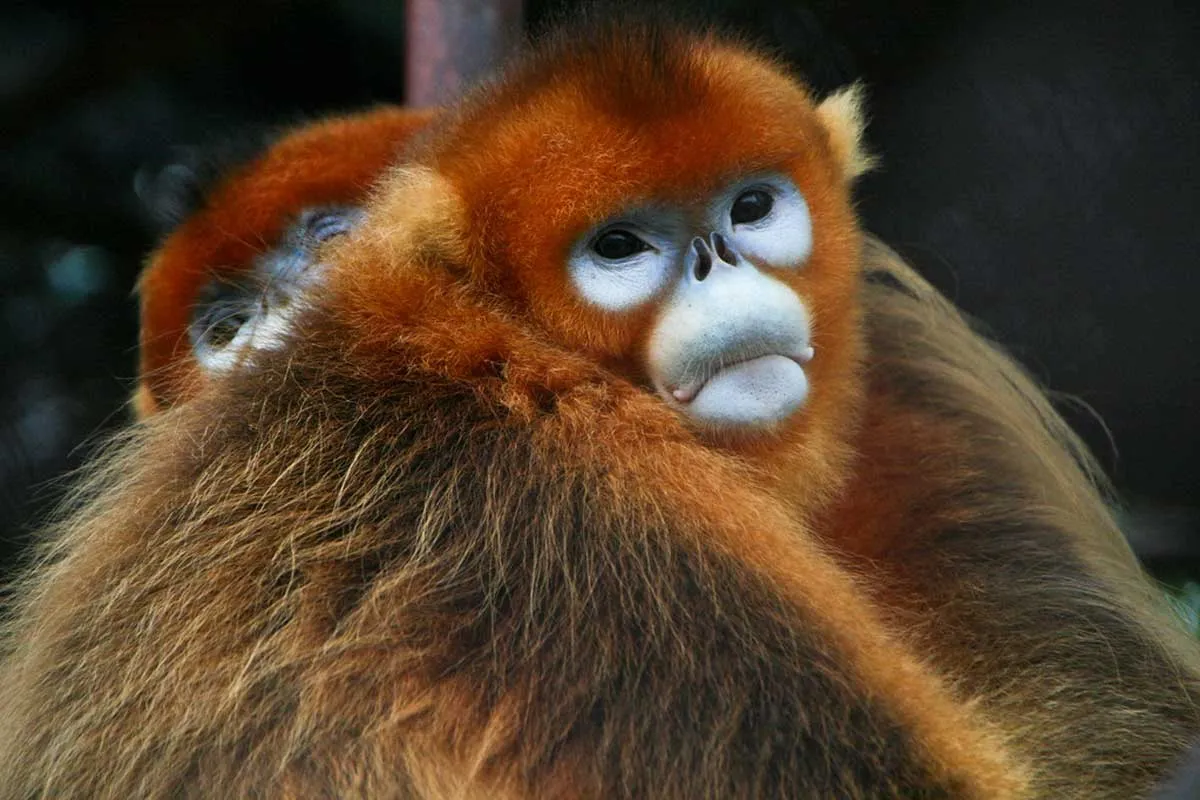
The Golden Snub-Nosed Monkey (Rhinopithecus Roxellana) lives in mountain forests and endures the coldest temperatures, more than any other non-human primate species in the world.
Their thick and furry coat helps them endure harsh winters, and glows with a bright golden color.
Fun Fact: Flaps of skin set with their nostrils are said to protect them from frostbite during extreme winters.
Behavior of Golden Snub-Nosed Monkey
These are very cute and have a charm of their own.
This blue-faced species is quite social and forms groups with other monkeys according to the season.
In summers, they gather in groups of around 600. In winters, these scatter in smaller groups of 60, only to merge in spring again.
Their grouping habits have more to do with food availability or human disturbance.
This elusive monkey species has been hard to study.
Diet of Golden Snub-Nosed Monkey
They have molded their diet according to their habitat and food availability.
Golden Snub-Nosed monkeys are herbivores and skilled at foraging in forest environments.
They eat buds, fruits, flowers, and leaver during the warmer months and bark and pine needles all year long.
The fatty seeds help them stay strong in winter.
They are also important to the ecosystem as they feast on dead trees.
Threats to survival
Snub nosed monkeys are among the world’s 25 most endangered primates!
Their population is highly impacted by tourism, illegal hunting, and habitat loss.
4. Mandrill – Largest type of monkey on Earth!
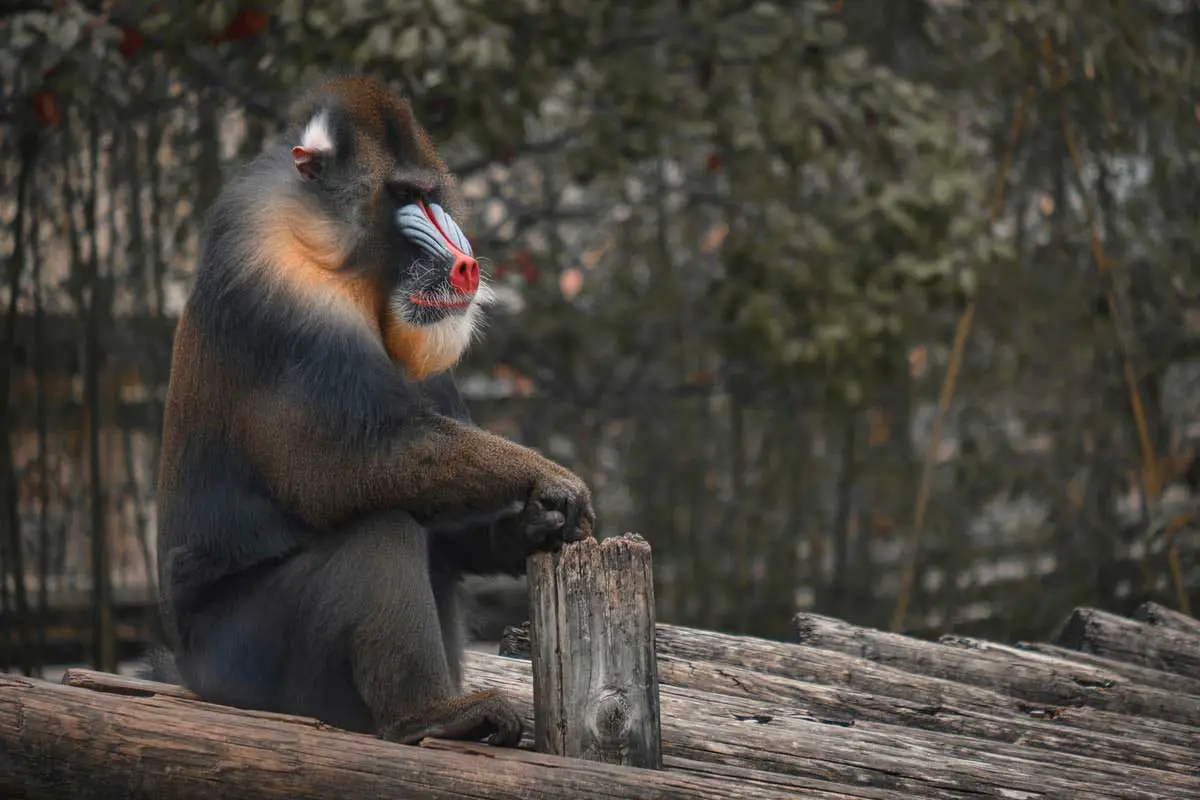
The mandrill (Mandrillus sphinx) is the largest monkey on Earth. They are native to west-central Africa’s rainforests.
Being the largest monkey on the planet, Mandrill’s male species are about 31 inches tall and weigh over 119 lbs!
Behavior of Mandrill Monkeys
Mandrills are actually shy and reclusive despite their humongous size.
They are terrestrial monkeys (love to stay on the ground) with long arms to reach for roots, fruits, and animals on the ground.
You can only see them climb trees when going for sleep or shelter. The built-in pouches in their cheeks are used to store snacks.
The long teeth are for their self-defense.
Fun Fact: Showing teeth is actually considered a friendly gesture amongst mandrills.
Mandrills live and move in troops of over 200 individuals, led by a male member and include young ones and females.
Diet of Mandrills
Mandrills are omnivorous and have a diverse palate.
- Plants,
- Fruits,
- Leaves,
- Roots,
- Fungi,
- Seeds,
- Snails,
- Lizards,
- Worms,
- Insects,
- Snakes
- Bird eggs
All of these are found in their natural wild environment.
Threats to survival
Mandrillus sphinx is considered a vulnerable species with declining population numbers.
Mandrills are hunted for their bushmeat and are considered a delicacy in Africa.
As with other types, these are also impacted by the increasing human settlement and spreading agriculture, reducing acreage of the forests they live in.
5. Proboscis Monkey
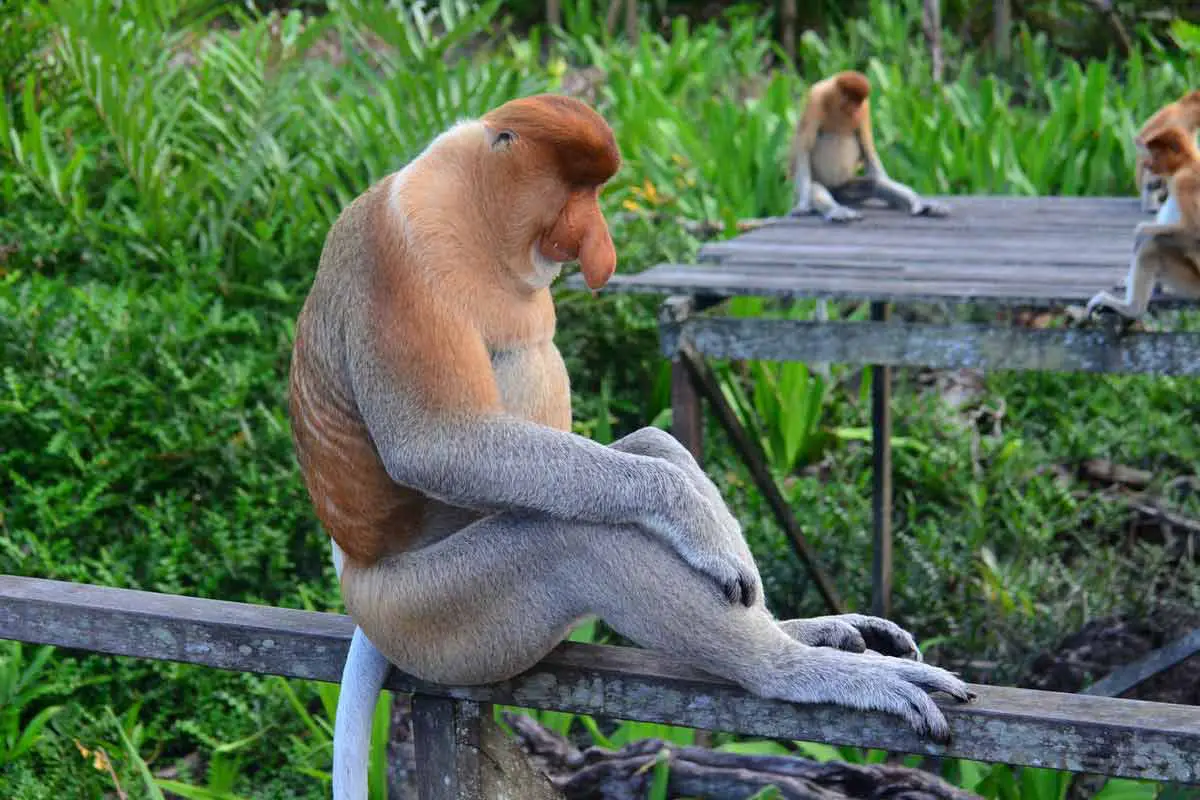
The endangered proboscis (Nasalis larvatus) is an Old World monkey. They are one of the largest types of monkeys in Asia and can weigh up to 50 pounds!
Behavior of Proboscis Monkey
The huge nose of the proboscis monkey helps attract mates and magnify their mating calls.
Fun Fact: Only the male Proboscis monkey has a distinct nose!
Proboscis monkeys are excellent swimmers. This helps when they cross crocodile-infested rivers within their forest habitats.
They live in groups with a male-dominant leader and love to settle near the water at night.
Diet of Proboscis Monkey
The proboscis monkey has a unique digestive system as it can eat unripe fruit seeds and young leaves, and also some insects.
Their complex stomachs survive on symbiotic bacteria for proper digestion.
Threats to survival
Their population is declining due to forest fires, destruction, and hunting.
The proboscis monkey is an easy target as it moves slowly and gets hunted for its medicinal powers.
6. Bald Uakari (Cacajao calvus)
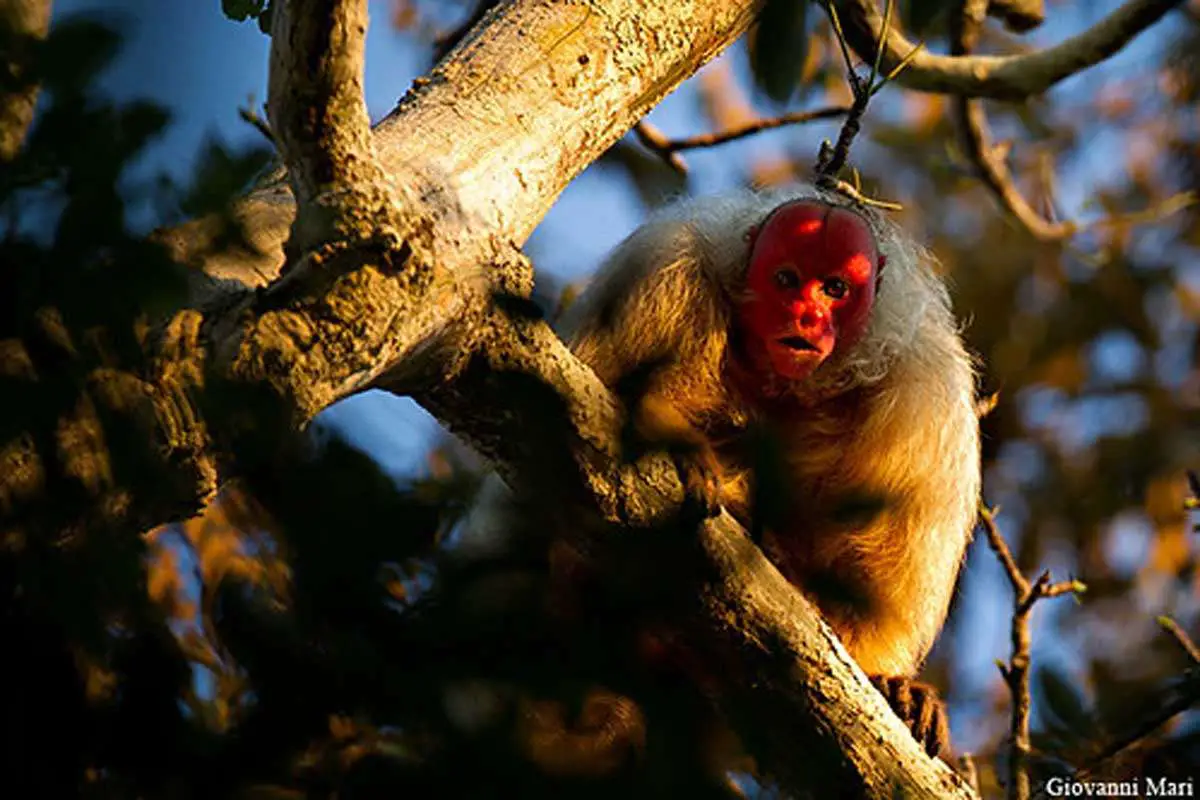
Bald Uakari monkeys live in the Amazon River and thrive in flooded rain forests and near water sources, such as lakes and rivers.
The face of The Bald Uakari (Cacajao calvus) monkey is a sign of the animal’s health. When they are sick, their face turns pale.
Behavior of Bald Uakari
Despite their short tails, they move nimbly in the forest with the help of their legs and arms.
They also live in troops and are extremely social. Their gatherings include over a hundred individuals but they can split to search for food.
They sleep high in the canopy of the forest at night.
Diet
Bald uakaris consume insects and leaves. Their strong jaws are capable of opening nuts.
They gather their food in trees and eat seeds or roots during scarcity of food.
Threats to survival
These smart beings are hunted for food in their Amazon habitats.
Uakaris are often captured by indigenous people living near the forests.
They are at risk of endangerment due to deforestation, owing to the timber industry that clears the forests.
7. Japanese Macaque (Snow Monkeys)
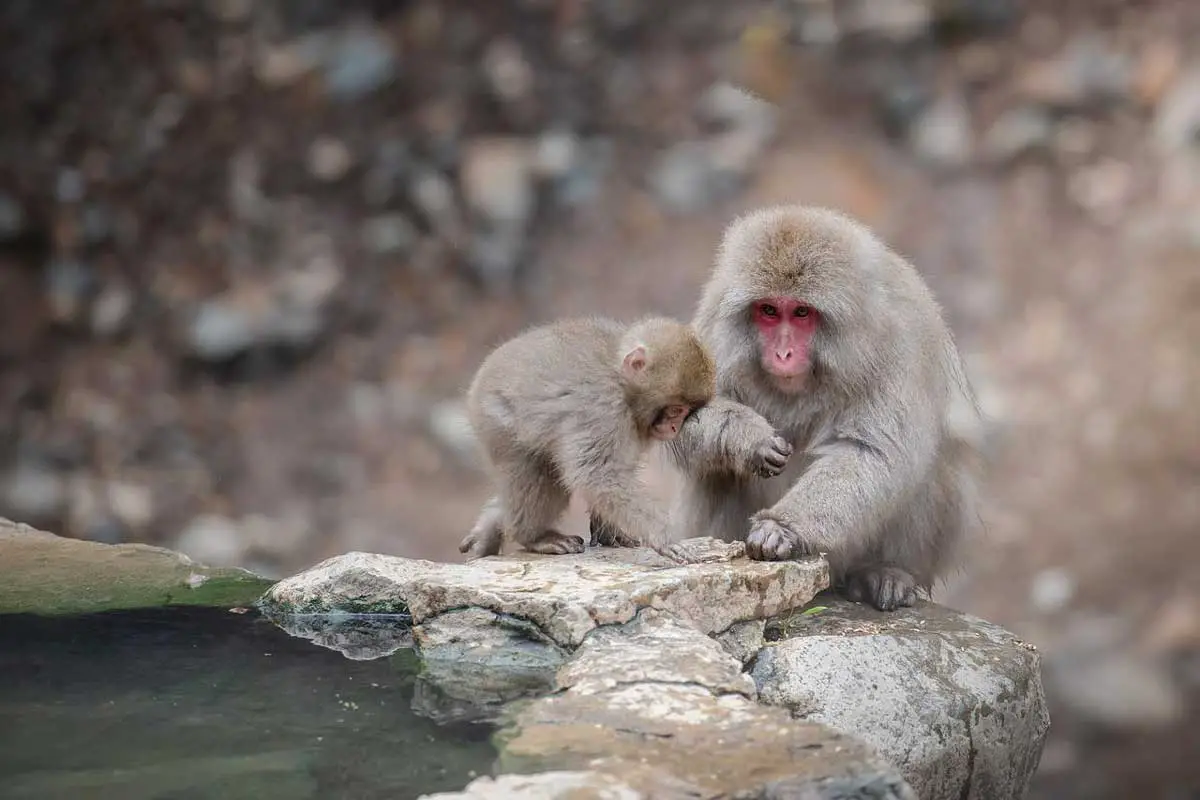
Also called snow monkeys, the Japanese Macaque or (Macaca fuscata) is found in Japan’s main islands. These belong to the Old World monkey classification.
Behavior of Snow Monkeys
They are an adaptable species and live in both cold and warm climates. They grow a thick insulating coat to survive the cold and maintain their warmth in winter.
A group of snow monkeys comes to the hot springs of Japan’s Honshu to bathe, attracting international tourists.
It is lovely to explore them in their natural habitat where they are at peace with each other.
Diet
The snow monkey is an opportunistic omnivore and eats seeds, flowers, bark, and young leaves, as well as crabs, crayfish, and snails.
They have more than 200 plants in their diet and their preference changes with each season. Japanese macaques prefer to forage on the ground.
They also have cheek pouches for storing snacks like Mandrills.
Threats to survival
They are at risk of endangerment due to human overpopulation and habitat demolition due to deforestation.
They are considered agricultural pests because they raid crops. Farmers often shoot at them to protect their crops.
8. Gelada (theropithecus gelada)
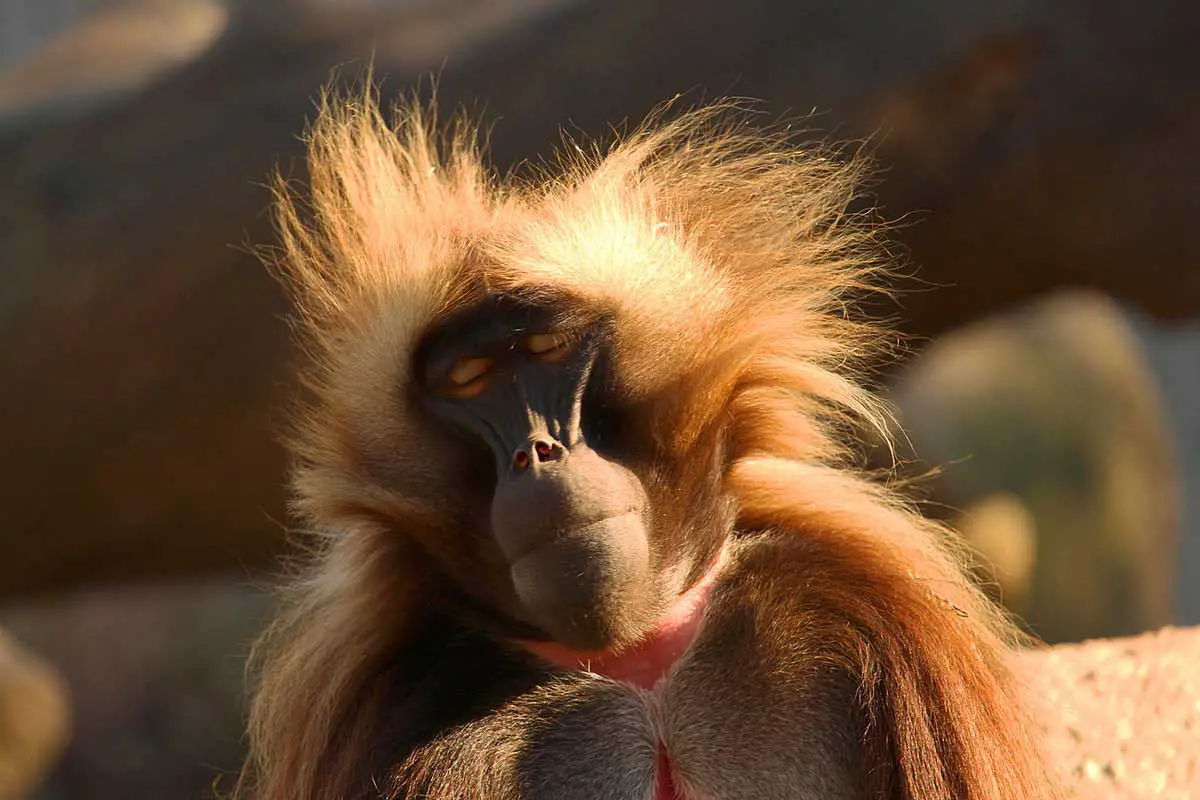
Gelada monkeys (theropithecus gelada) are the most terrestrial primates. They are unique creatures that love to live in Ethiopia’s mountains.
They are sometimes called Gelada baboons or bleeding heart monkeys.
Behavior of Geladas
Gelada baboons have flexible opposable thumbs and fingers but have poor tree climbing skills.
They spend most of the time on the ground finding food and hiding on cliffs to escape predators.
Geladas have thick sitting pads on their bottoms, allowing them to sit for most of the day, munching on herbs and grass.
Diet
They mainly eat leaves and sometimes eat invertebrates, fruits, and crops if the opportunity arises.
Geladas are the last species of grass-eating primates.
Threats to survival
The gelada baboons are at risk of endangerment due to the increasing livestock grazing, habitat destruction, expansion of invasive species, and agricultural land.
9. Western Red Colobus
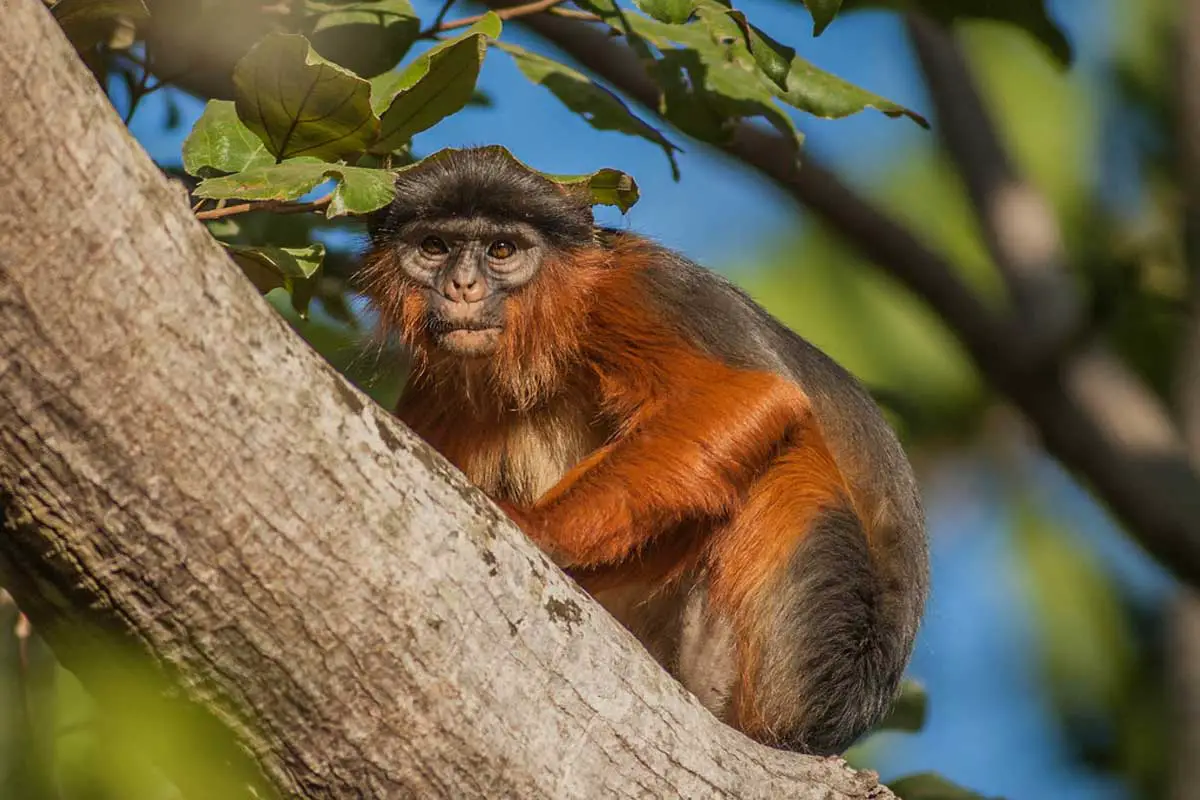
The Western Red Colobus monkey or Piliocolobus badius mostly survives on leaves.
They are typically found in West Africa and are commonly known as Upper Guinea red colobus.
Behavior of Red Colobus Monkeys
Rarely seen on the ground, Red Colobus monkeys dwell in the forest canopy and love to stay there. They can move quickly, jumping between trees.
Diet of Western Red Colobus
They are herbivorous and usually snack on flowers, unripe fruits, seeds, grains, and young leaves.
The Western Red Colobus Monkey can’t eat ripe fruits or anything high in sugar content because their digestive systems can’t support it.
Threats to survival
They are endangered species due to excessive hunting, logging, and being the primary prey of chimpanzees.
They are also hunted by humans for their meat.
Deforestation, clearance of agricultural land, logging and habitat loss has become a threat for these monkeys.
10. White-Faced Saki
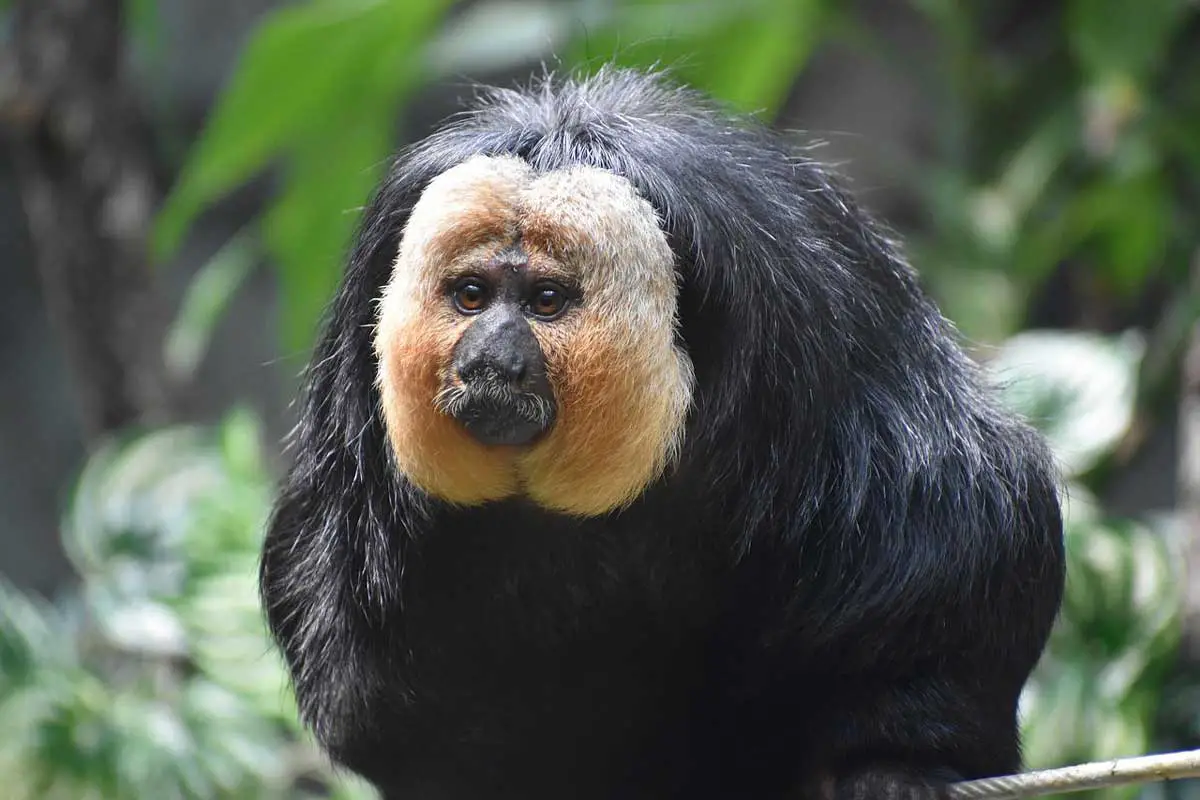
They belong to the New World family and are found in South American forests.
White-Faced Sakis or Pithecia pithecia are great athletes and also called flying monkeys.
Behavior of the White Faced Saki
White-faced sakis spend most of their time in trees. They are very devoted to their mating partners and usually mate for life.
Male white faced saki monkeys are more active than female saki.
These monkey breeds improve their relations by grooming each other.
Saki monkeys can jump and move swiftly in case of danger or seek food. They can cover long distances pretty quickly.
Diet
White Faced Saki monkeys rely on seeds and fruits for most of their diet. Their teeth are strong and thick useful for peeling fruits and crushing seed shells.
They also eat flowers, insects, small animals, and young leaves.
Threats to survival
They face great danger to their habitat.
Cutting Down Trees to build farms, buildings, and roads, is reducing the place for these animals to live.
11. Black snub-nosed monkeys
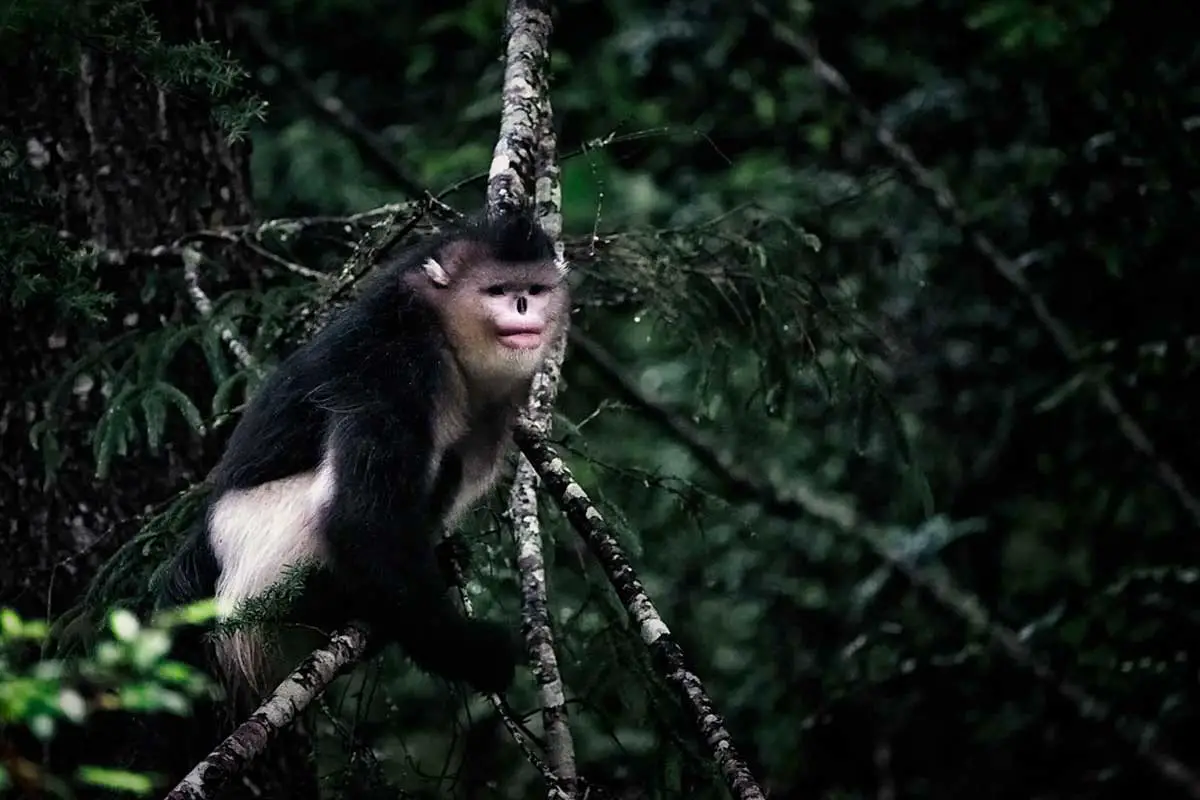
The black snub-nosed monkey (Rhinopithecus bieti) is endangered and only found in the mountains of Tibet and southwest China.
Behavior
Black snub-nosed monkeys are very quiet and communicate with gestures and eye contact.
This monkey breed lives longer than any other primate.
Diet
They eat leaves but also seeds, fruits, and flowers.
They also snack on lichens and seek ground on the ground or travel distances.
Threats to survival
They are often hunted and used for setting bait for other animals.
They face habitat loss as land is used for logging and agriculture.
12. Roloway Monkey
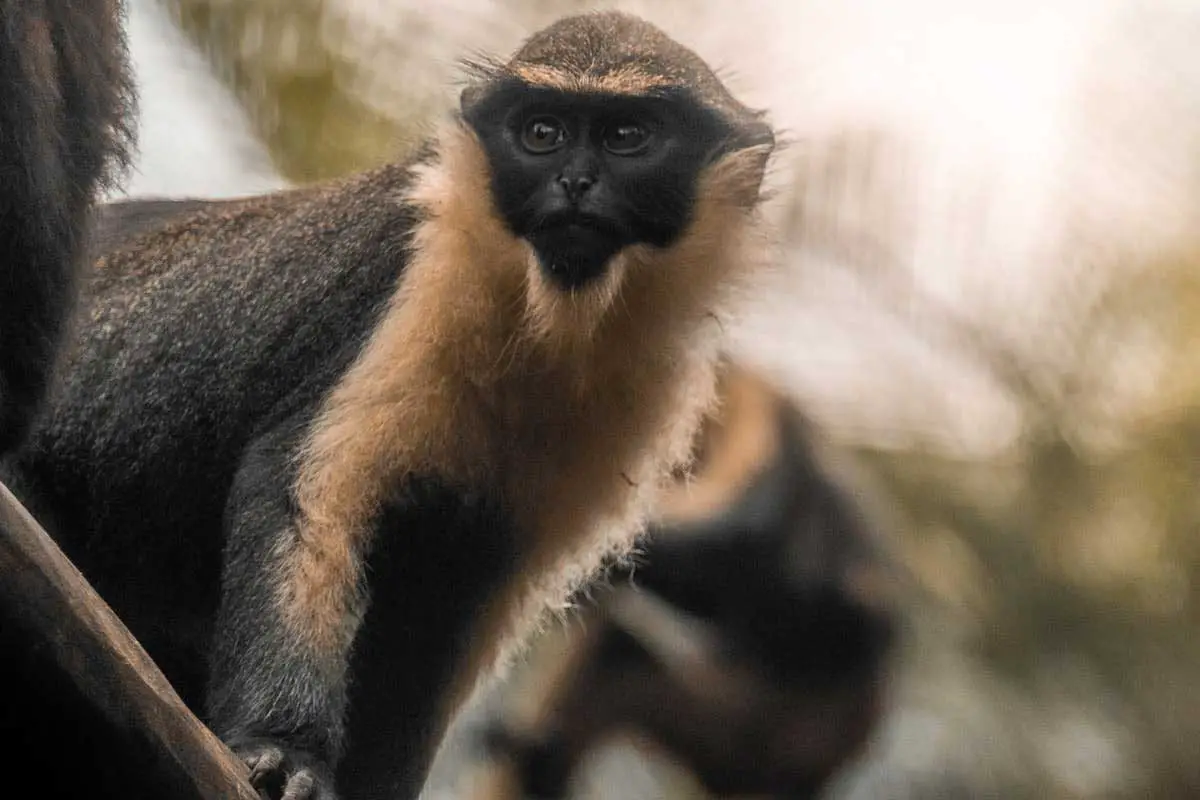
Belonging to the old world classification, the Roloway Monkey (Cercopithecus roloway) is endemic to tropical West Africa.
Behavior
Roloways are most active during the day, and roam around the forest in groups. They silently scurry along tree branches to not attract attention.
Diet
Roloways Monkeys eat insects, flowers, leaves, and fruits for their nutritional requirements. These omnivorous primates hunt down invertebrates in the canopies.
Threats to Survival
Roloways are on the edge of extinction. Their threats include hunting and loss of habitat.
13. Black Howler
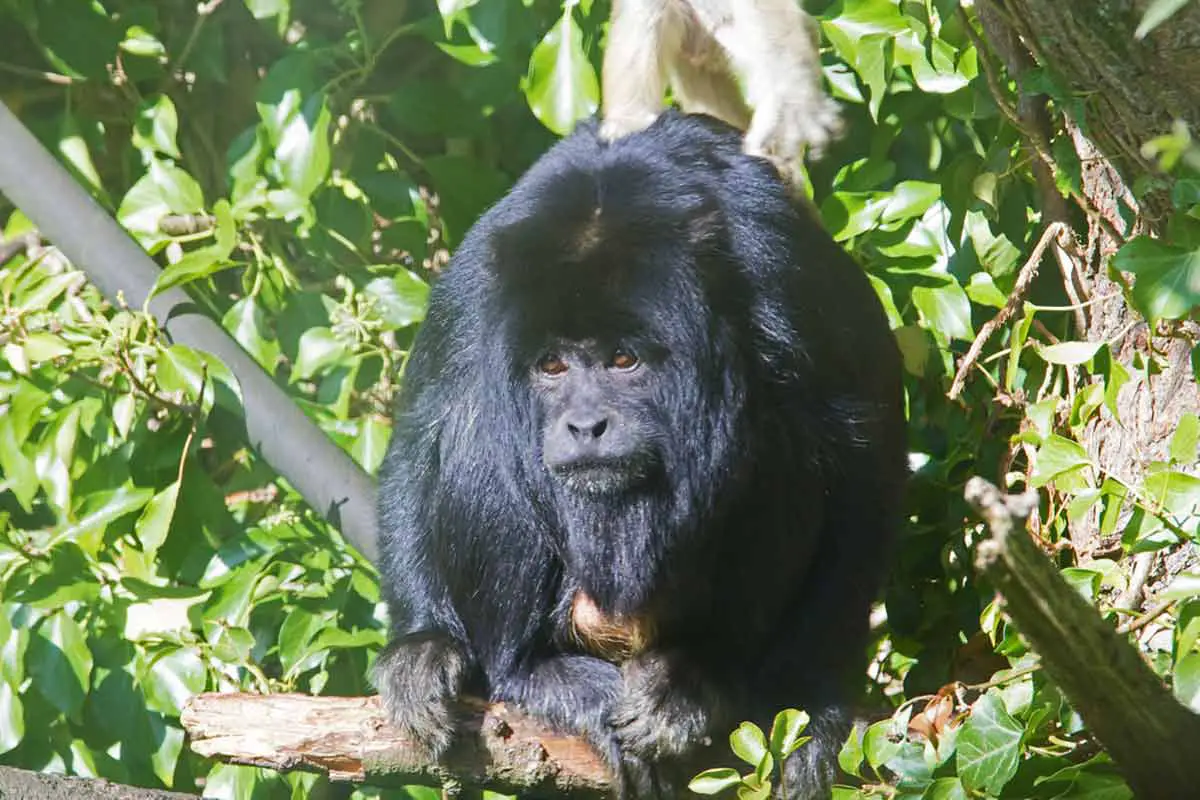
The Black Howler (Alouatta caraya) has habitats in Latin America.
Fun Fact: All species of Black Howler monkeys are NOT black. The females are actually blonde!
Behavior
Black howlers are renowned for howling as they have large throats. These often send out loud cries at dusk or dawn.
They usually stay aloft and munch on leaves in the daytime.
These howler monkeys are lazy like me, and sleep for most of the day!
Diet
Howler Monkeys are herbivores.
These can be found eating flowers, tropical fruits, and leaves of the trees.
Threats to survival
They Mantled howler monkey is under threat because of excessive hunting for illegal pet trade.
Other reasons include deforestation and loss of habitat.
14. Barbary Macaque
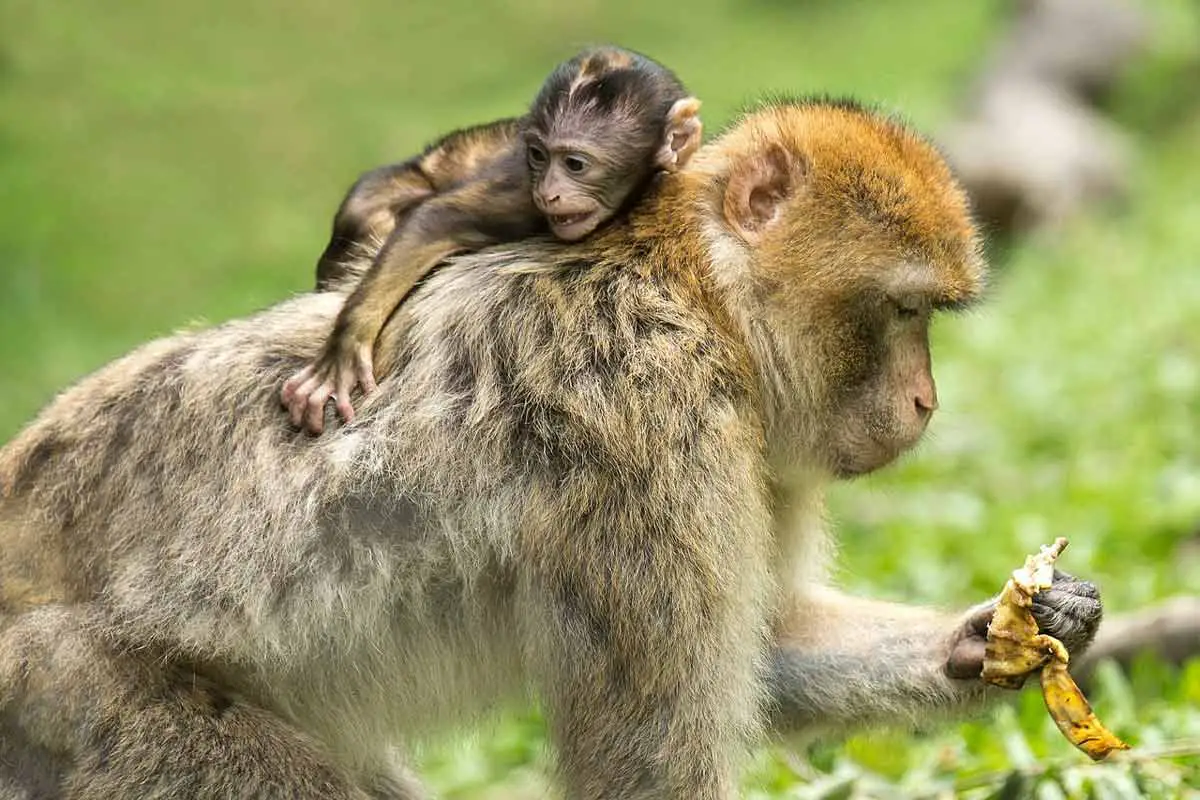
Commonly found in the forests and mountains of Algeria, Gibraltar, and Morocco, they are the only wild monkeys in all of Europe.
Macaques don’t have a tail, their babies do. The Barbary Macaque’s tail disappears as they grow.
Behavior
They exist in diverse groups and there is often a matriarch, a dominant female, that takes care of the whole group.
There are also hierarchy systems in their troops.
Diet
Mostly they eat plants and all sorts of insects and hunt for them during day time.
Threats to survival
The Barbary Macaque (Macaca sylvanus) is endangered due to habitat degradation.
They are also illegally traded as pets out of Morocco.
15. Northern Plains Gray Langur
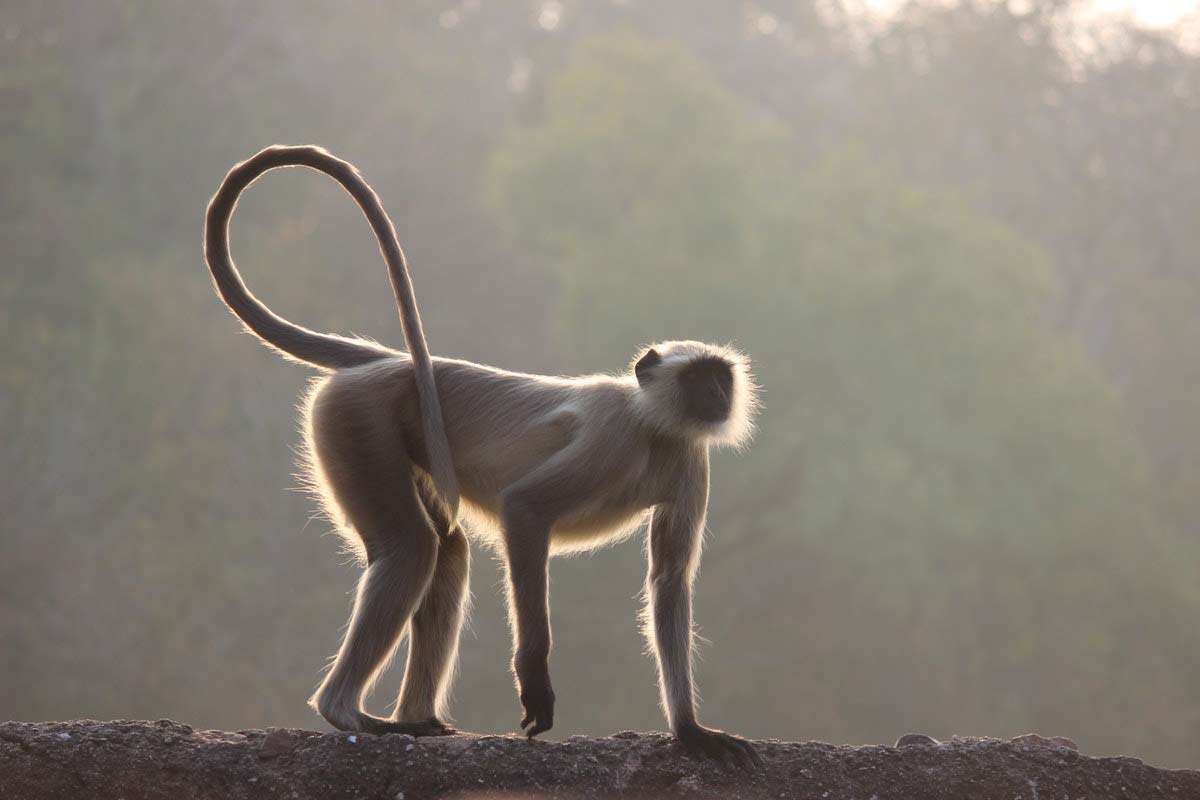
The Northern Plains Gray Langur (Semnopithecus entellus) is one of the most famous types of monkeys in India.
They are considered sacred in some local cultures of India.
Behavior
Gray Langur loves to live in deciduous forests, sometimes seen in urban cities. They use voice and facial expressions to communicate.
They can adeptly swing trees with their large prehensile tail.
Diet
The Gray Langur usually eats mature leaves. That’s how it survives through dry weathers. They also eat insects, bark, caterpillars, seeds, and flowers.
Threats to survival
Due to habitat loss, the Gray Langurs are on the brink of endangerment.
16. Common Marmoset
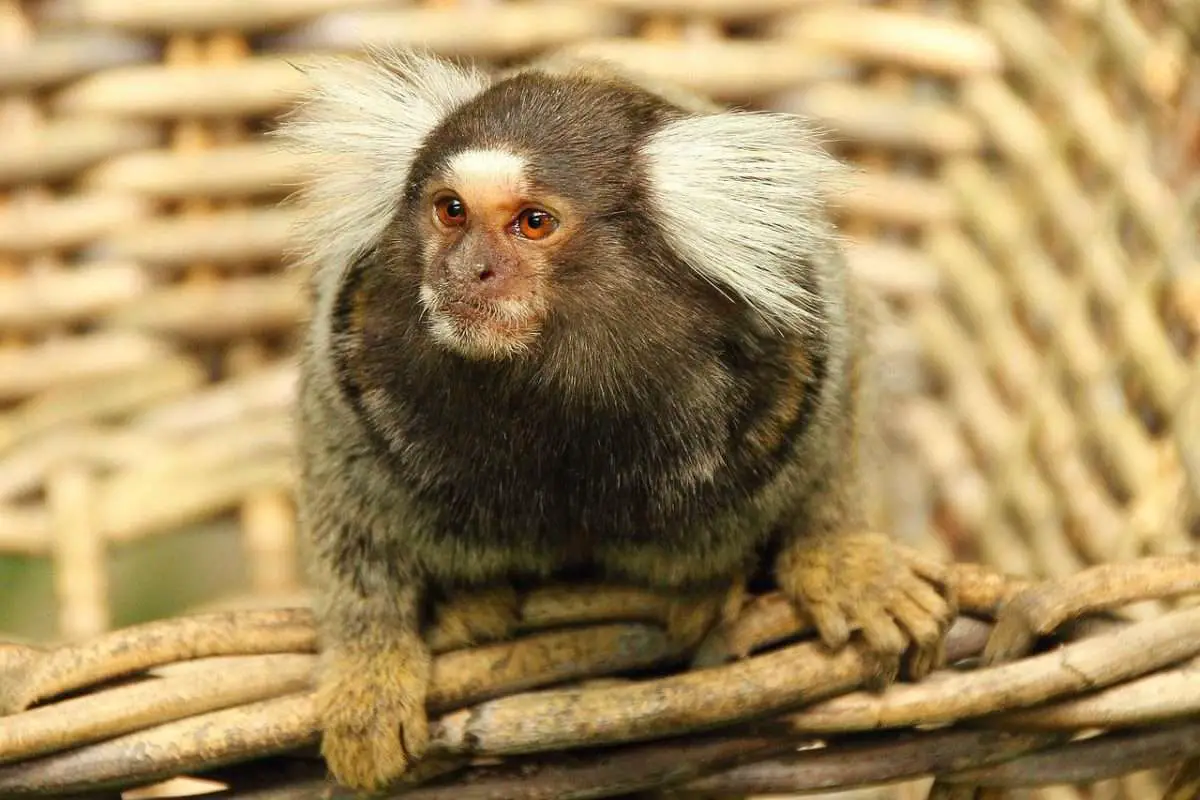
The Common Marmoset (Callithrix jacchus) is a small primate particularly found in Brazil. They’re famous for their white tuft of hair around the ears.
Behavior
Common Marmosets can live in diverse habitats, including urban locales and rainforests, but don’t do good as captive animals.
They prefer living in groups and often surrounded by a family of three generations.
Diet
Common Marmosets prefer to consume insects, though they also like to eat resins, gum, and tree sap.
Threats to survival
Their population keeps decreasing every year due to loss of habitat and deforestation.
17. Gee’s Golden Langur (Trachypithecus geei)
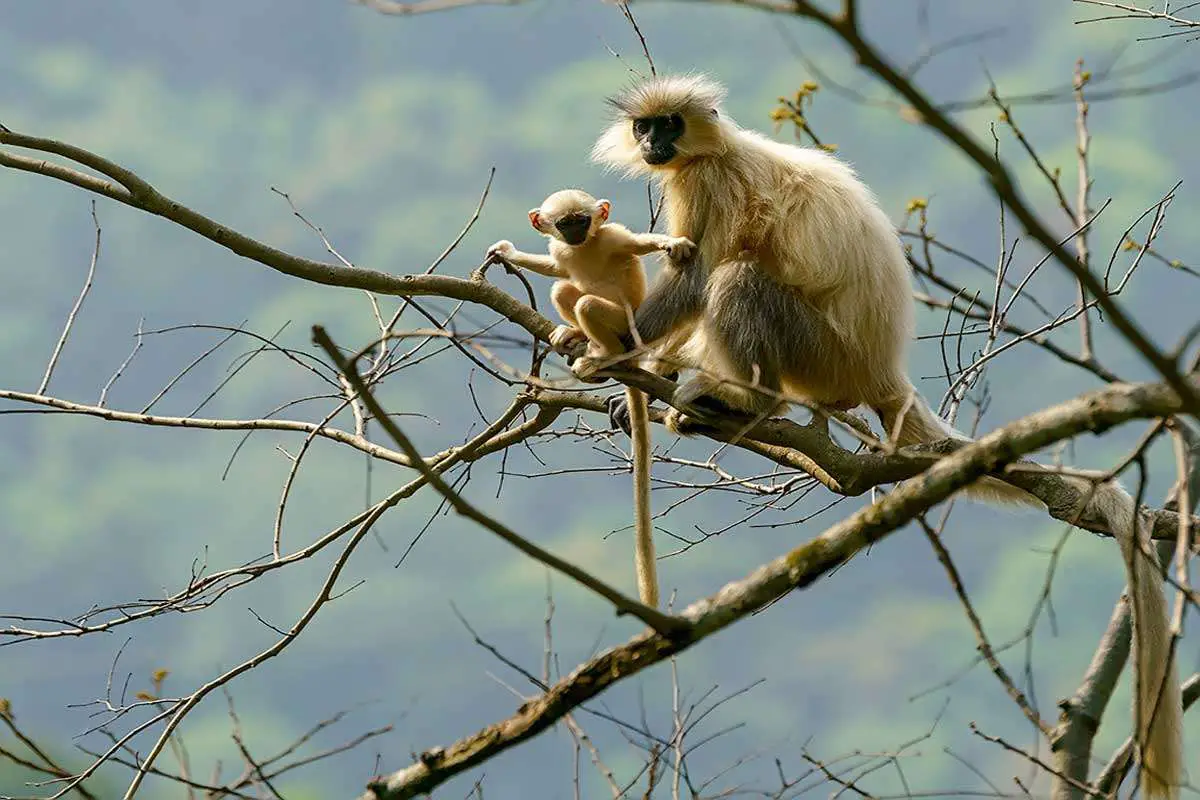
The golden langur is know for (you guessed it!) its stunning golden coat. They are found in Bhutan and India.
Behavior
The Gee’s Golden Langur is quite shy and it’s difficult to spot one in the forests.
Diet
They are mainly herbivorous with a diet consisting of unripe and ripe fruits, young and mature leaves, buds seeds, and flowers.
Threats to survival
The Golden Langur is an endangered species and is in major threat because of illegal tree cutting, grazing by villages, fuelwood collection, and encroachment.
Its cousin, the Popa Langur (Trachypithecus popa) is only found in Mayanmar. The species is critically endangered with only 200 left in the whole world!
18. Colombian Red Howler
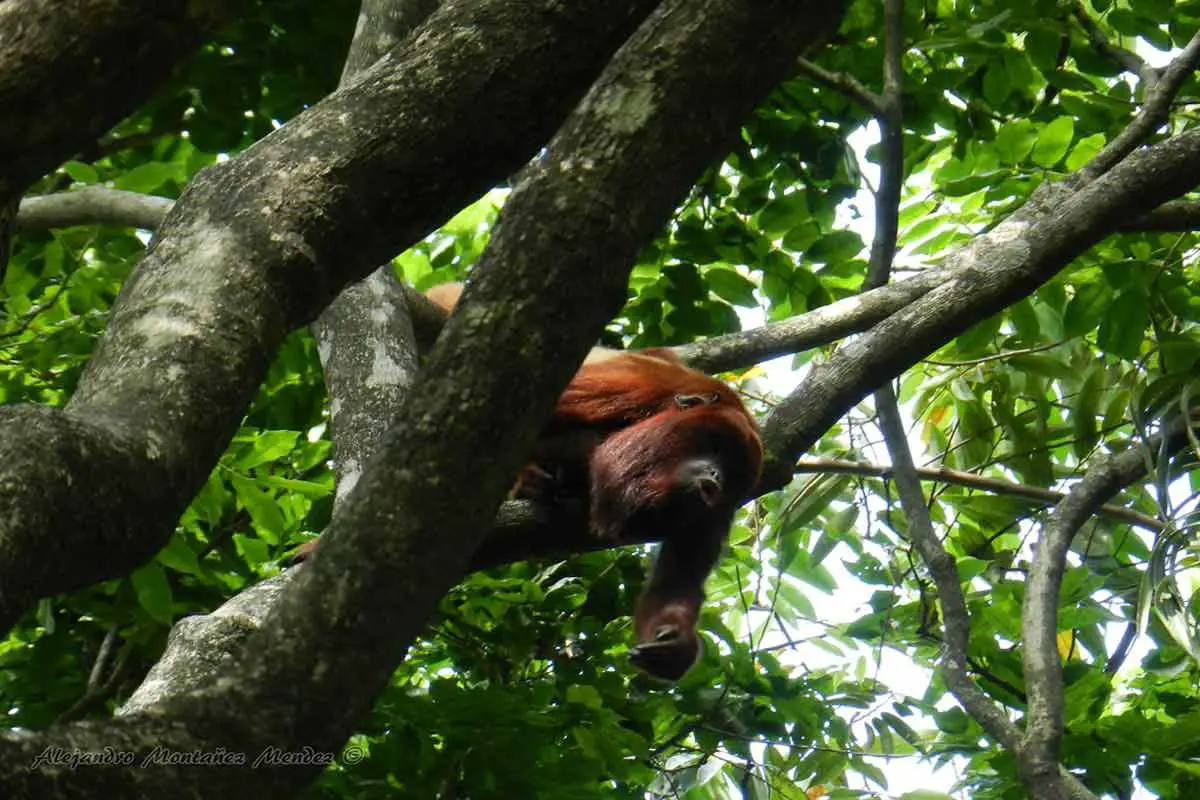
The Colombian Red Howler (Alouatta seniculus) primates are popularly found in the forests of South America and are a large New World monkey species.
Behavior
Howler Monkeys usually stay off the ground. They munch on leaves and forage over the day, going to sleep up on the trees!
Diet
Howlers are folivores, making their main diet as leaves. They also rely on nuts, flowers, fruits, seeds and even small animals for essential nutrients.
Threats to survival
Columbian Red Howlers are on the brink of endangerment due to forest clearing, habit demolition, and hunting. This is why they are protected at the Corcovado national park in Costa Rica.
19. François’ Langur
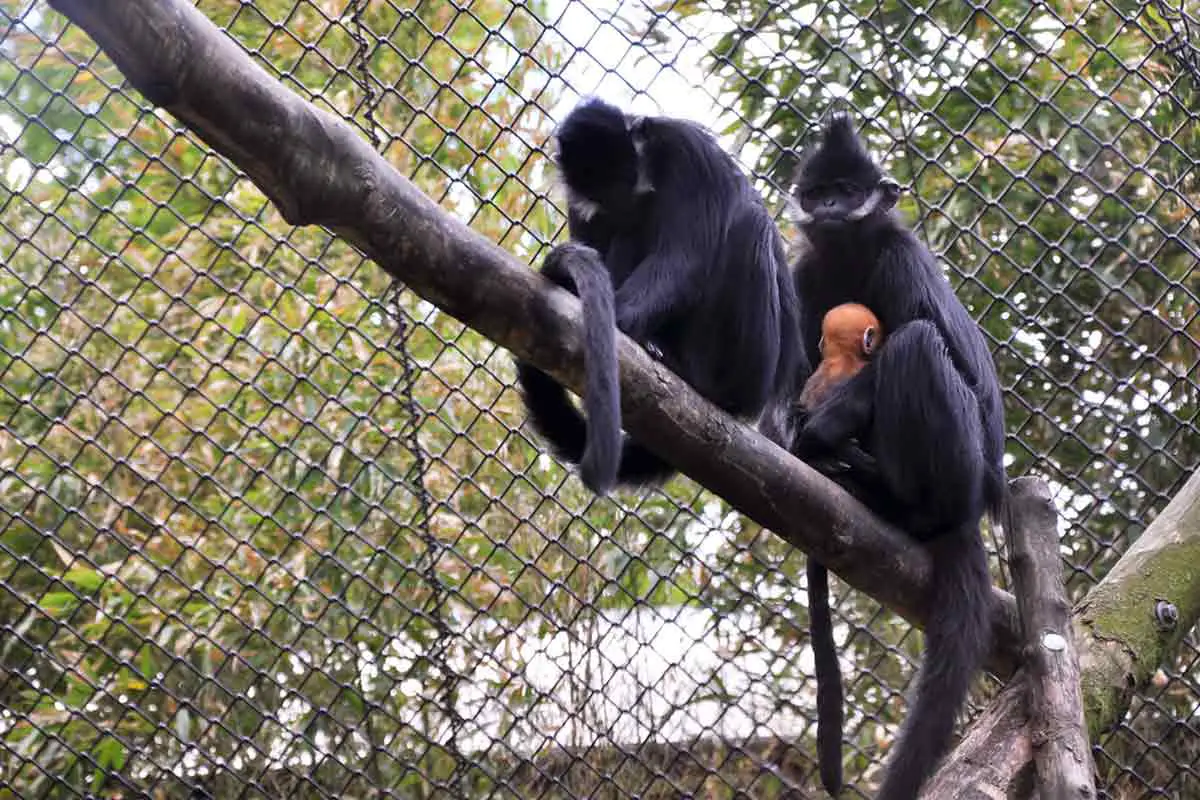
The François’ Langur (Trachypithecus francoisi) is found only in Vietnam and China.
Appearance
It is a jet-black medium-sized monkey with white sideburns, which makes its unique feature and makes them easy to identify.
Behavior
They spend most of their day searching for food and at night and even during the day they rest a lot to digest their food.
Diet
The digestive system of the François’ Langur is pretty strong! It can break down pretty much anything. In any case, they usually stick to eating leaves.
Threats to survival
It is considered endangered and its population is on the verge of extinction.
20. East Javan Langur
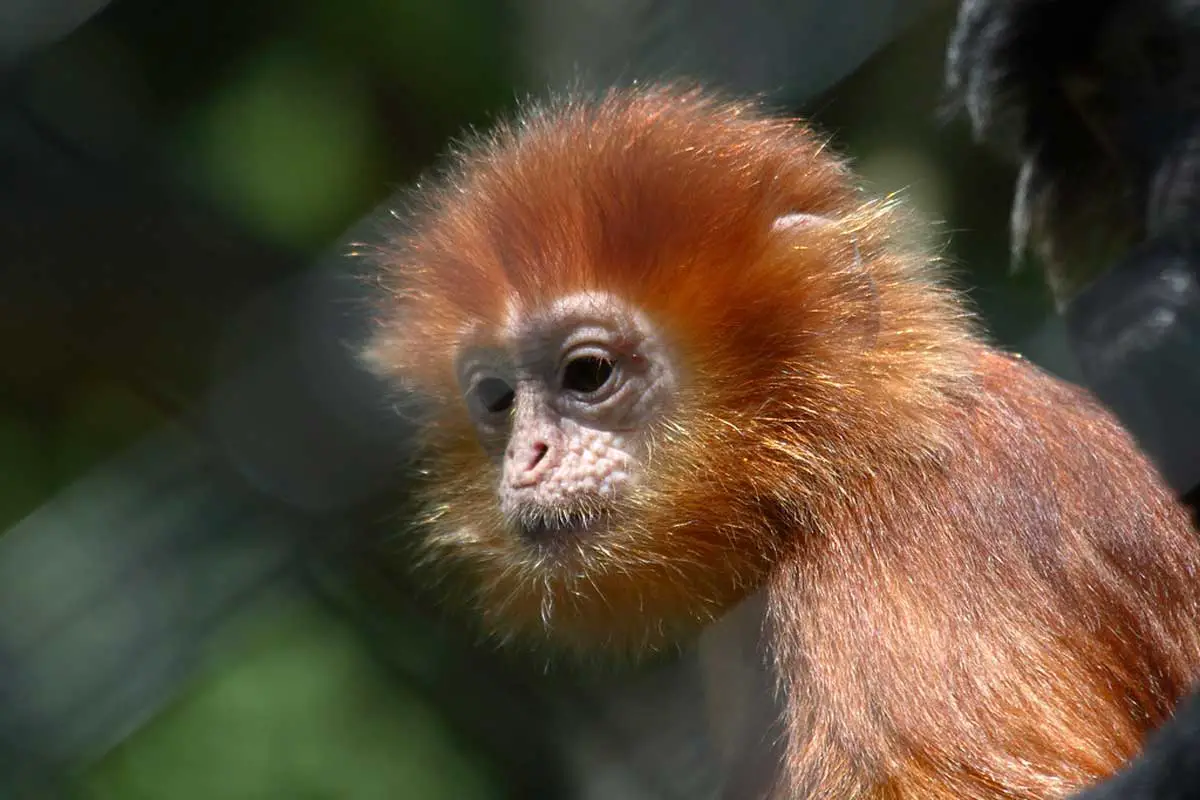
The East Javan Langur (Trachypithecus auratus) monkey is a small and funky-colored animal found on Javan’s islands.
I say “funky colored” as they range between black and orange.
Behavior
They are docile and shy animals and don’t like to waste their energy. They can gather into groups of eight, with male dominant members.
Diet
It eats leaves, flowers, and fruits. This cute monkey is a herbivorous.
Threats to survival
Their natural habitat is declining so they are at risk of extinction.
21. Red-Shanked Douc
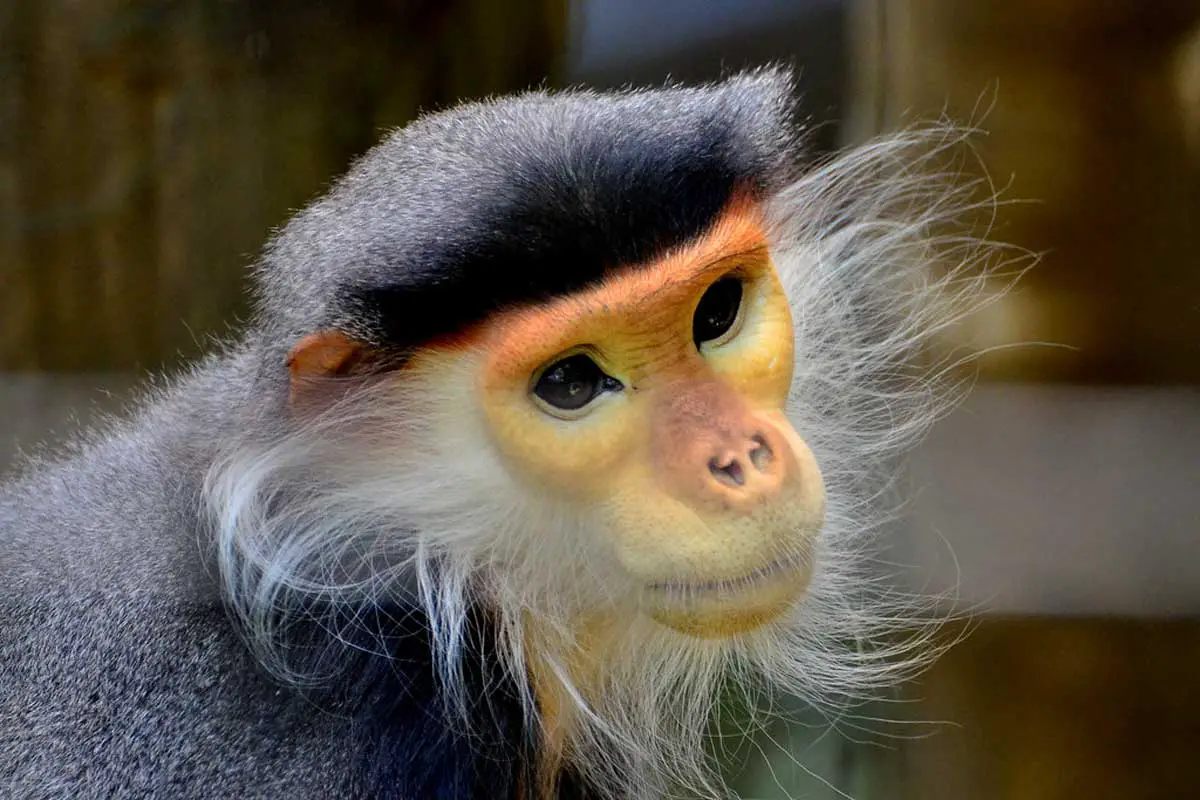
They are one of the most endangered species on the planet. The Red-shanked Douc (Pygathrix nemaeus) is found in Laos, Vietnam, and Cambodia.
Behavior
They sleep and eat in the trees and are not flexible to adding new members to their groups.
Diet
They live in tropical forests, eating fruits, leaves, flowers, and bark.
Threats to survival
They are critically endangered and hunted for medicine and bushmeat. Though, there are steps taken to limit illegal hunting.
22. Rhesus Macaque
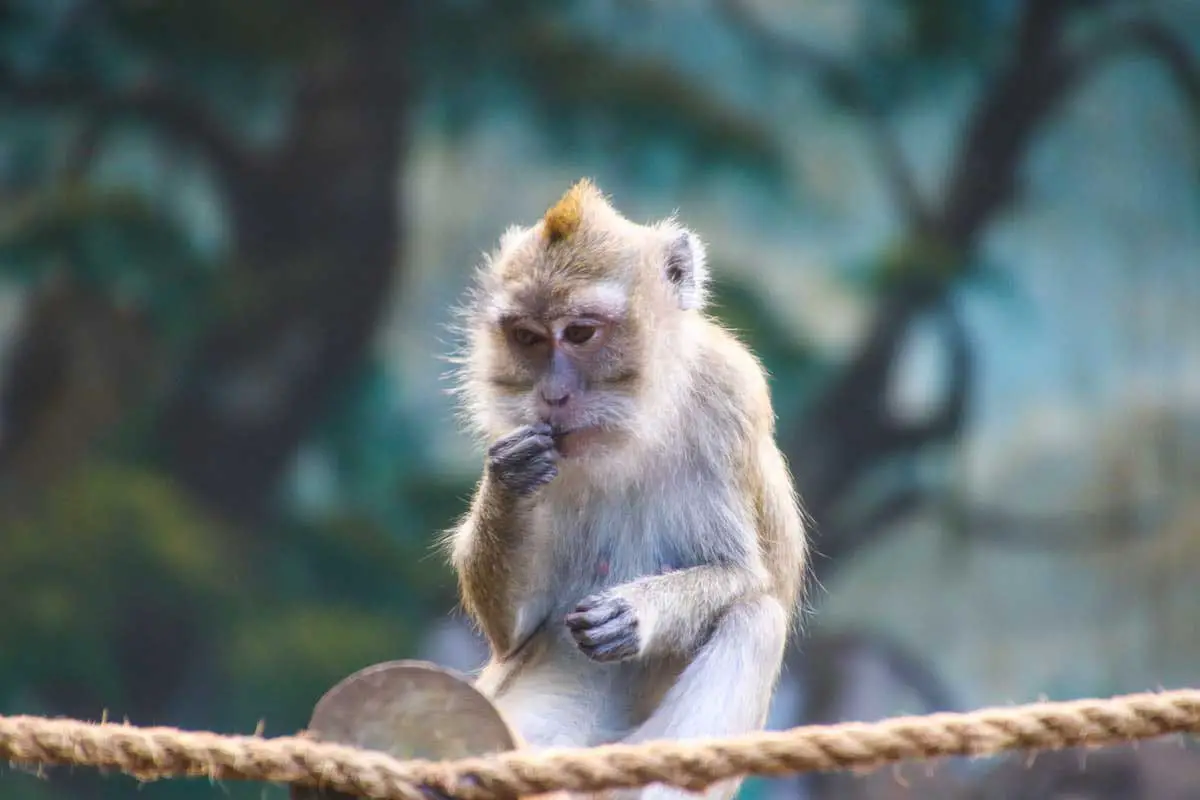
The Rhesus Macaque (Macaca mulatta) is native to central and southern parts of Asia.
Behavior
The Rhesus macaque can survive in inhospitable landscapes and exist in groups of 200. This monkey species is very resilient and isn’t bothered by deforestation and environmental issues.
They are good swimmers and climbers and live on the ground.
Diet
They usually eat small animals, and insects, as well as fruits, flowers, seeds, and plants.
Threats to survival
They are the least endangered type of monkeys. Troops of rhesus macaques were introduced in South Carolina, Puerto Rica, and Florida, to improve tourism.
23. Blue Monkey
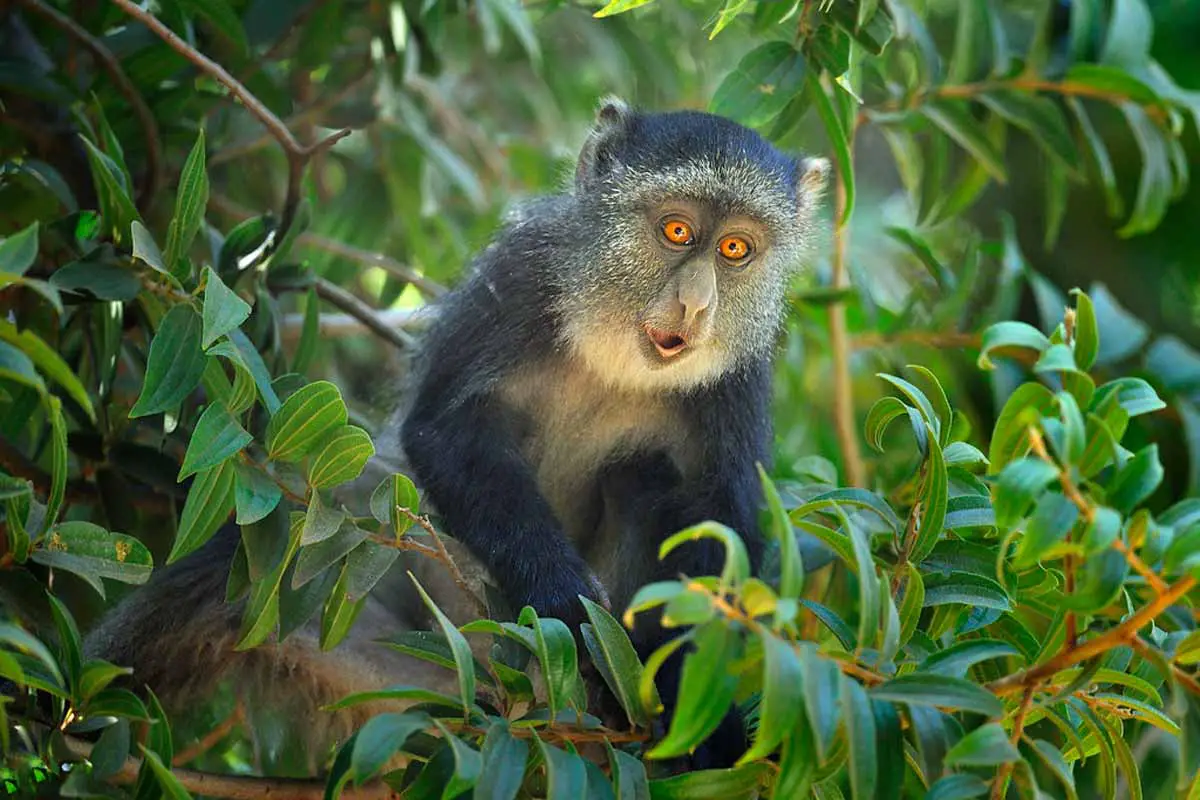
The blue monkey or Cercopithecus mitis is commonly found in Central and Eastern Africa.
Behavior
They live high in forest habitats and are highly adaptable. There are 16 subspecies of blue monkeys. The female blue monkeys are quite violent towards other groups.
Diet
They spend most of their time in nature and eat fruits and leaves.
Threats to survival
Clearing of rainforests and habitat loss has resulted in the endangerment of these species. They also destroy exotic trees and crops, for which they are killed by humans.
24. Golden Lion Tamarin
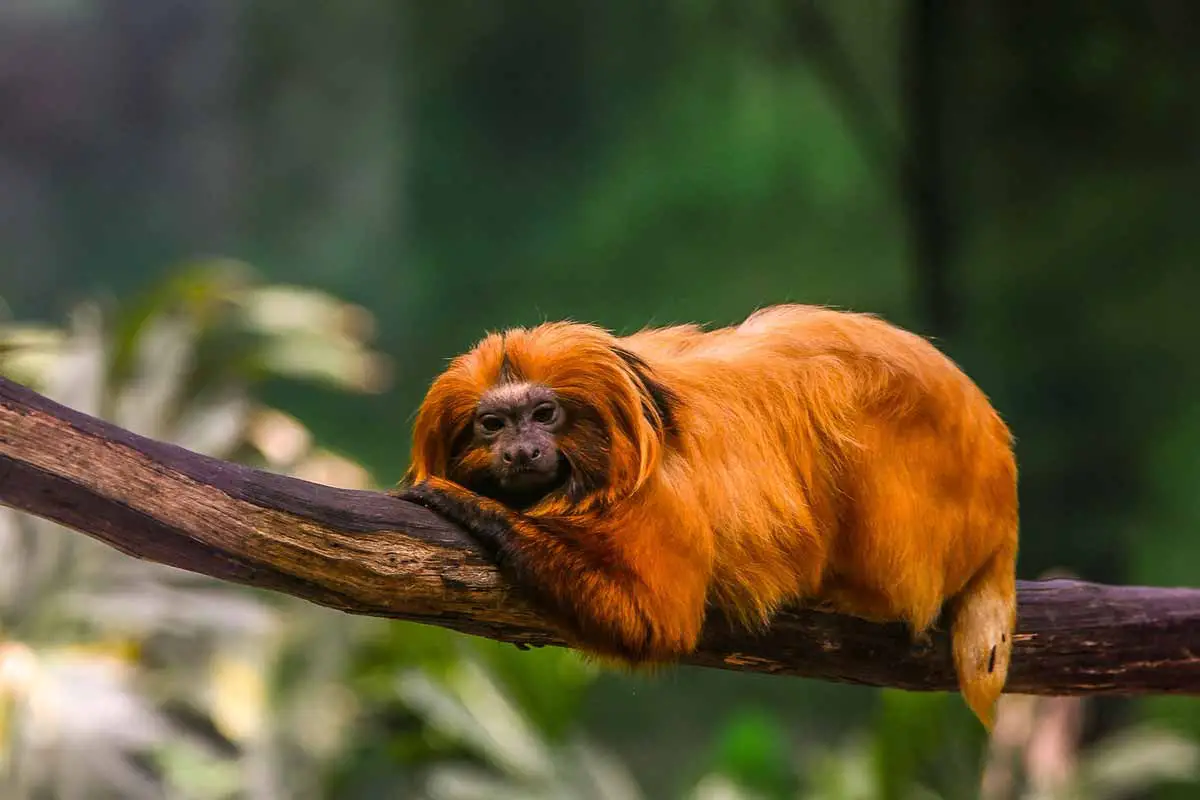
The Golden Lion Tamarin (Leontopithecus rosalia) also called the Golden marmoset is named after its impressive mane.
National Geographic describes them as the most beautiful species out of all the four Lion Tamarins.
Behavior
They are rare primates living in trees and sleeping in hollows and forages during the day.
Diet
They eat sweet fruit, small lizards, and insects, as well as plants and leaves.
Threats to survival
These enigmatic monkeys are a threatened species due to the disappearing habitat in Brazil’s rain forests caused by expanding industries, agriculture, and logging.
25. Patas monkey
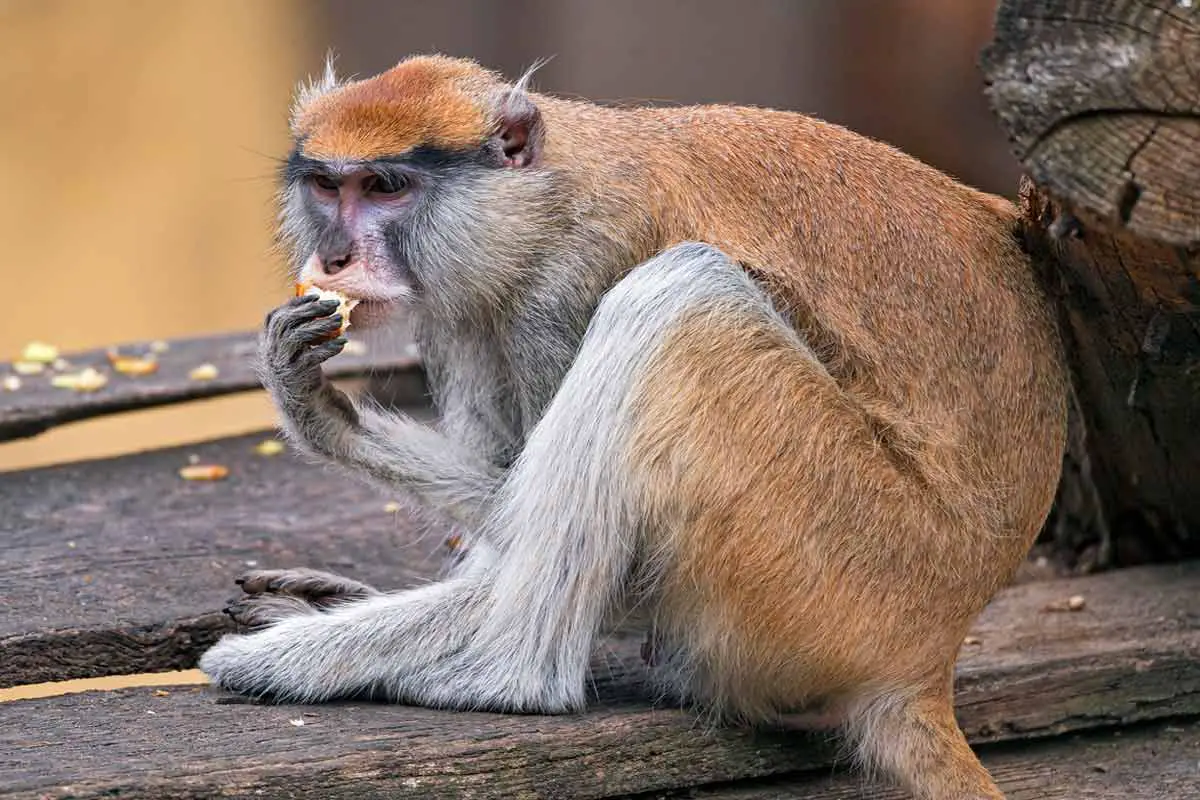
The patas monkey or Erythrocebus patas has long limbs and primarily dwells on the ground – usually in the grassy regions of Central and West Africa.
Behavior
They are omnivorous creatures with females leading troops. The male acts as a peripheral and draws the attention of predators from females and young monkeys.
Diet
Its diet mostly consists of plant matter such as seeds, leaves, and fruits.
Threats to survival
It is at the risk of endangerment and surfers from major threats affecting their species. Their natural habitat is also being destroyed.
26. Common Woolly Monkey
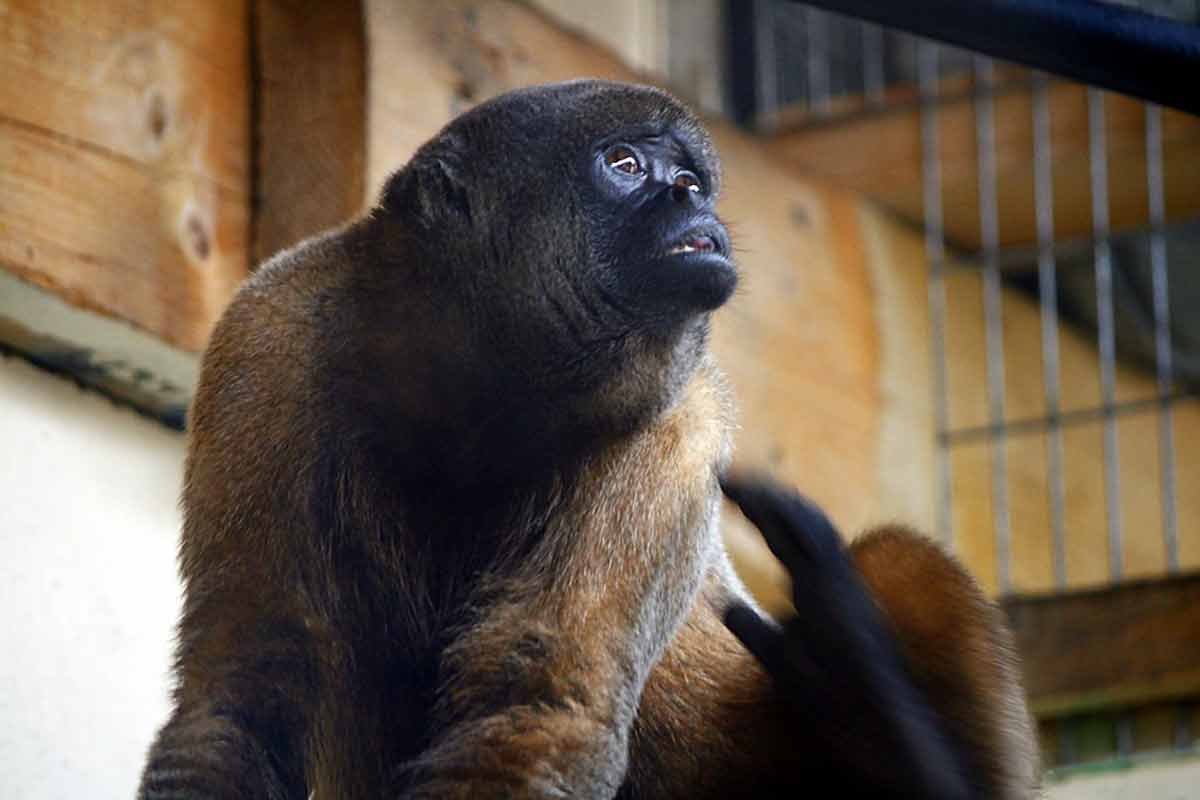
Woolly monkey or Lagothrix lagotricha is found in the Amazon jungle.
There are over four species of woolly monkeys in South America, including the common woolly monkey, gray woolly monkey, yellow-tailed woolly monkey, and Colombian woolly monkey.
Behavior
It is active during the daytime, lives in small groups, and likes to associate with howlers, capuchins, and other monkeys. It also moves slowly and uses its hands to move.
Diet
They are omnivores, which means that their diet consists of both animals and vegetables. However, they usually eat a lot of fruit.
Threats to survival
It is critically endangered and at a severe loss of habitat.
Types Of Monkeys As Pets
Note: This is purely for informative purposes. Monkeys should be left in their indigenous habitat and not captured through illegal pet trade practices.
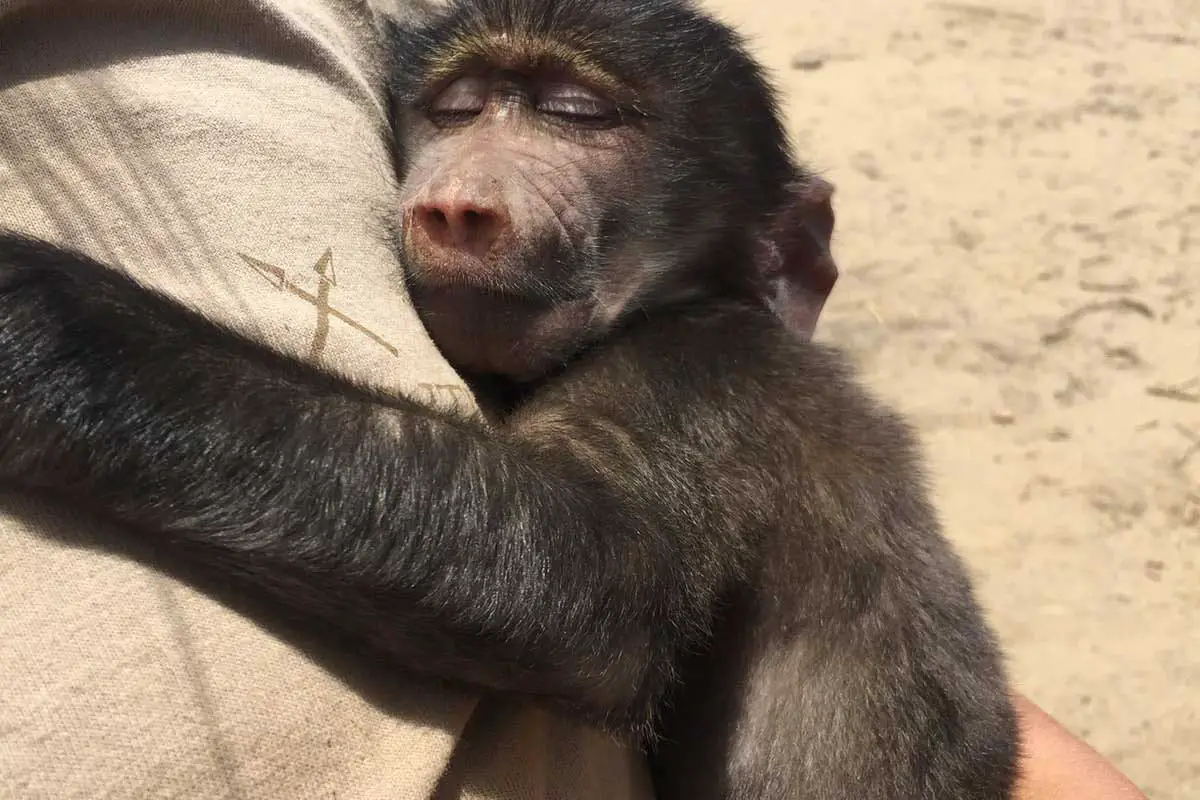
Monkeys are cute and a lot of people wish to keep them as pets. Some are even inspired by TV shows and movies.
Whether it is Ross’ Marcel or Aladin’s Abu, monkeys are portrayed as cool pets in pop culture. Even the great ape of the Planet of the Apes are known for their brains.
However, it’s not all fun and games, and your primate won’t go on adventures with you in real life. But you would need to give them a lot of care.
Many species are likely to become violent, so you need to give them a peaceful environment and lots of space.
Not all monkey species are good to be kept in your home, but here are 8 types of pet monkeys you can consider.
27. Capuchin monkey
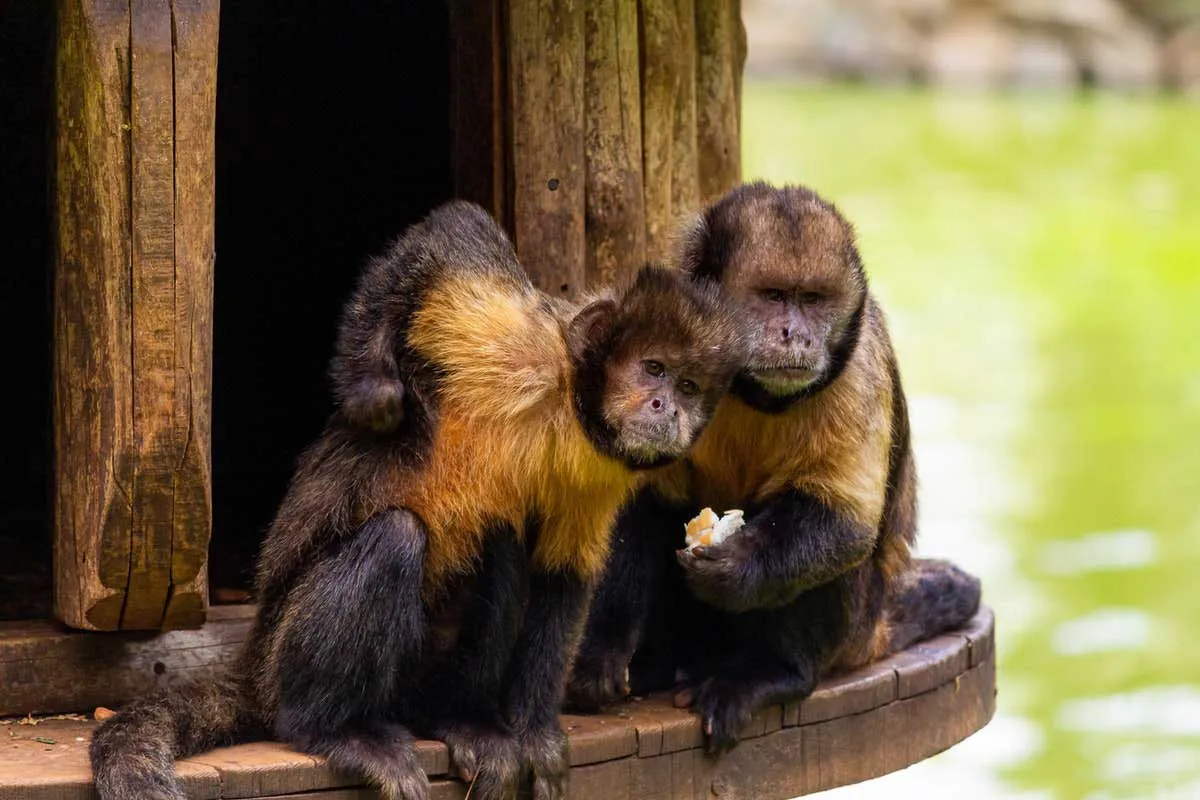
Capuchins (Cebinae) are quite smaller than chimpanzees, which makes them easier to care for. They usually weigh less than 10 pounds and won’t rip off someone’s face.
Your favorite fictional monkey in a TV show or movie is most likely to be a capuchin. These curious creatures are easy to train and live up to 25 years.
Behavior
They’re active creatures and can easily become violent. They need the company of other capuchins to socialize and space for exercising.
Watch this amazing video by Nat Geo WILD to learn some interesting facts about the intelligence of Capuchin monkeys.
I promise it’ll amaze you!
Diet
You can feed your capuchin pet some veggies and fruits cut into small pieces so they can eat with their hands.
Like a few times a week, you can feed them two small fruit slices or a banana, a quarter of an apple, or some peanuts.
Threats to survival
They have a high productivity rate and adaptability to diverse habitats.
However, they are still at risk of habitat loss and are hunted for food or as pets.
28. Common Squirrel monkey
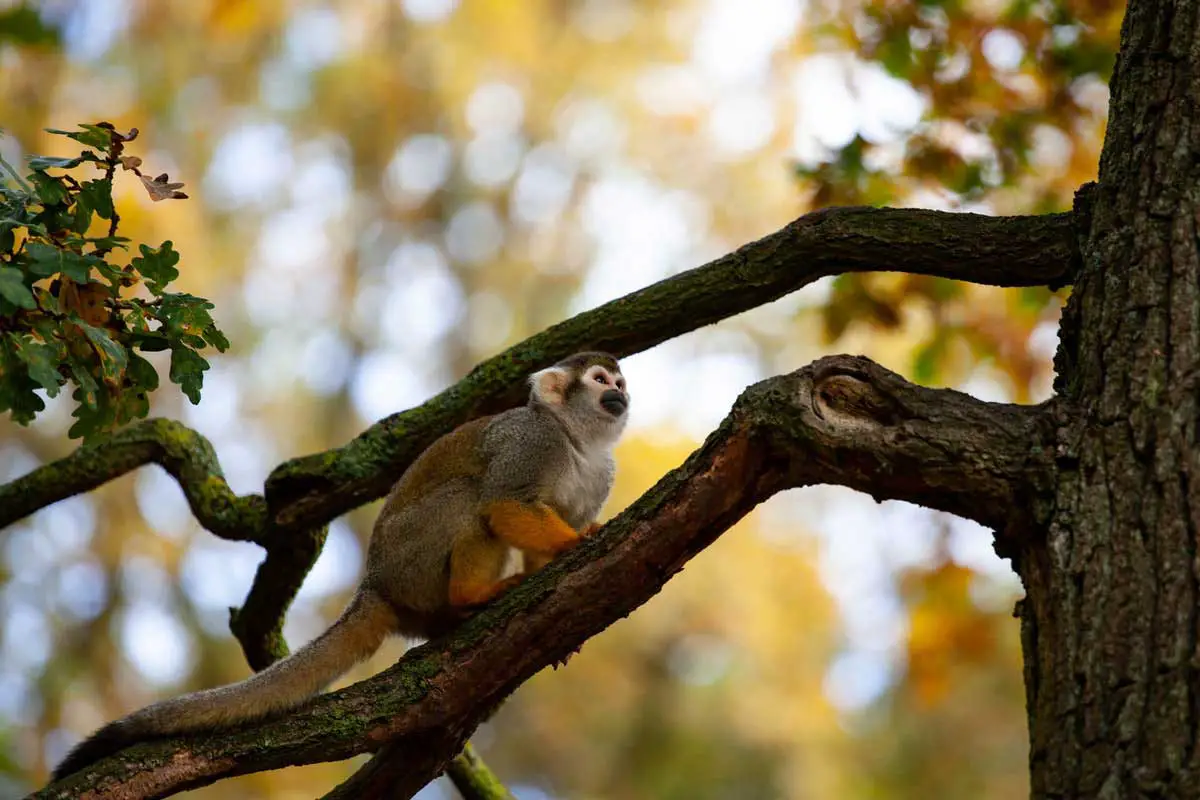
Also very small like capuchins, these cute monkeys weigh just 1 to 3 pounds. The common squirrel monkey (Saimiri sciureus) is native to the dense forests of Costa Rica.
The Squirrel Monkeys are most commonly spotted monkeys in the Amazon Rainforest.
Behavior
Squirrel monkeys are quite active and flexible. You would need to give lots of space to him.
They love an outdoor garden with trees.
Diet
They’re picky eaters so figuring out the diet can be challenge.
They eat eats, nuts, leaves, seeds, buds, flowers, and even small birds. You can also serve monkey biscuits and other small snacks.
Threats to survival
They are at constant threat from their predators, which include eagles on trees and snakes on ground.
29. Guenon
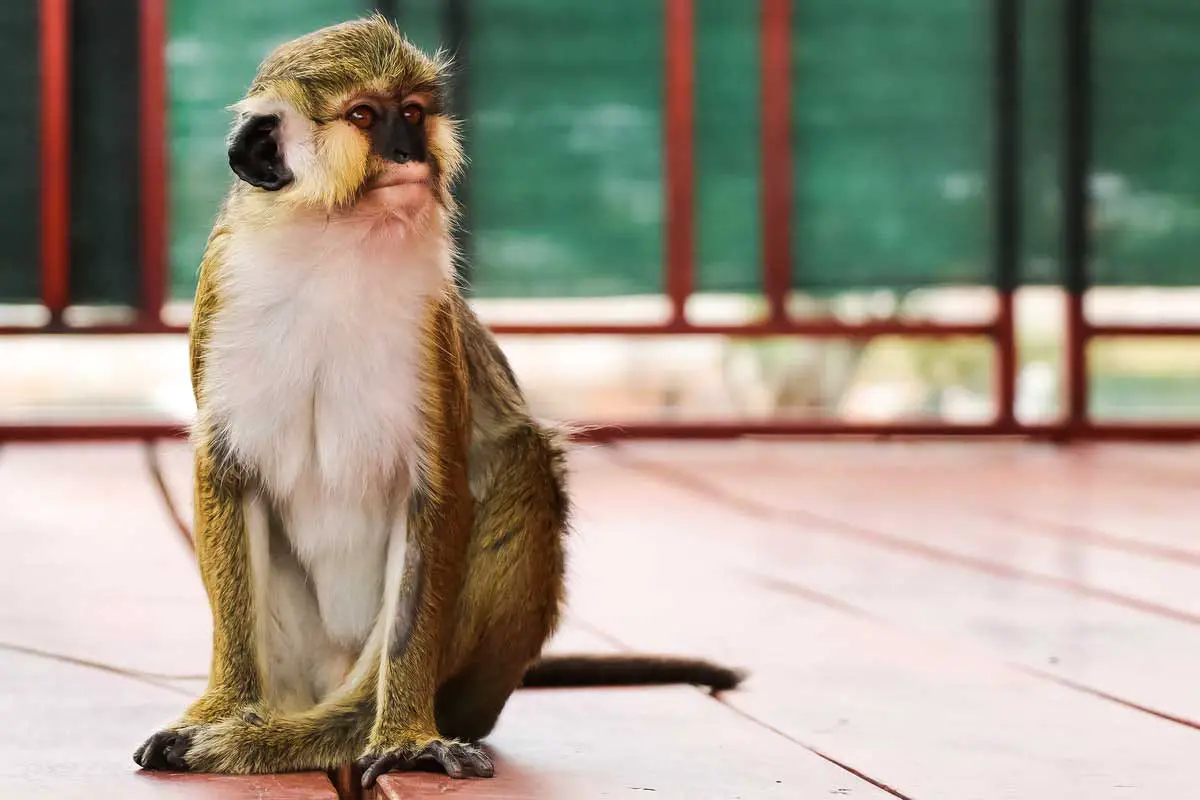
Guenons or Cercopithecus are famous to be kept as pet monkeys due to their beautiful looks.
There are many types of guenons, consisting of grivet, green monkey, and the vervet monkey.
Behavior
Guenons are very loud and can get violent. You will need to have a lot of patience to deal with them as pets.
Diet
They love a plant-based diet and you can give them all kinds of fruits to eat.
Threats to survival
They are endangered because they are caught when they dwell on the ground and due to habitat fragmentation and loss of habitat.
30. Emperor Tamarin
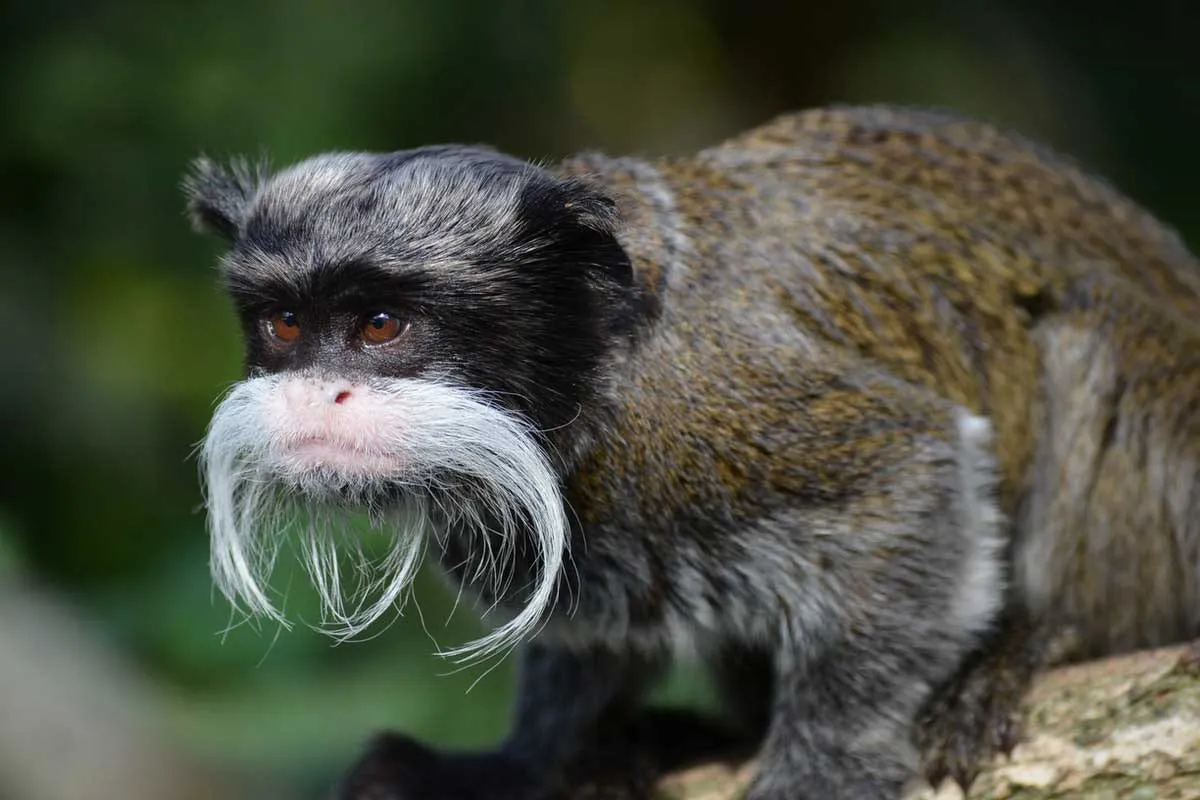
Falling in with the marmosets, the Emperor Tamarin (Saguinus imperator) is also one of the smallest New World monkeys.
Fun Fact: The Emperor Tamarin was named after former German Emperor Wilhelm II, who had a similar-looking mustache.
Behavior
They are found in the mountains and forests of Brazil, Peru, and Bolivia.
They have slender long red tails with tiny spots of white, red, and gold on their gray bodies.
You’ll need a small space to keep them but a lot of time and energy.
Diet
They are omnivorous and you can give them hard-boiled eggs, sweet potatoes, green beans, mealworms, crickets, and fruits.
Threats to survival
They are at threat from dogs, cats, snakes, and even humans who are destroying their habitats.
31. Central American Spider Monkey
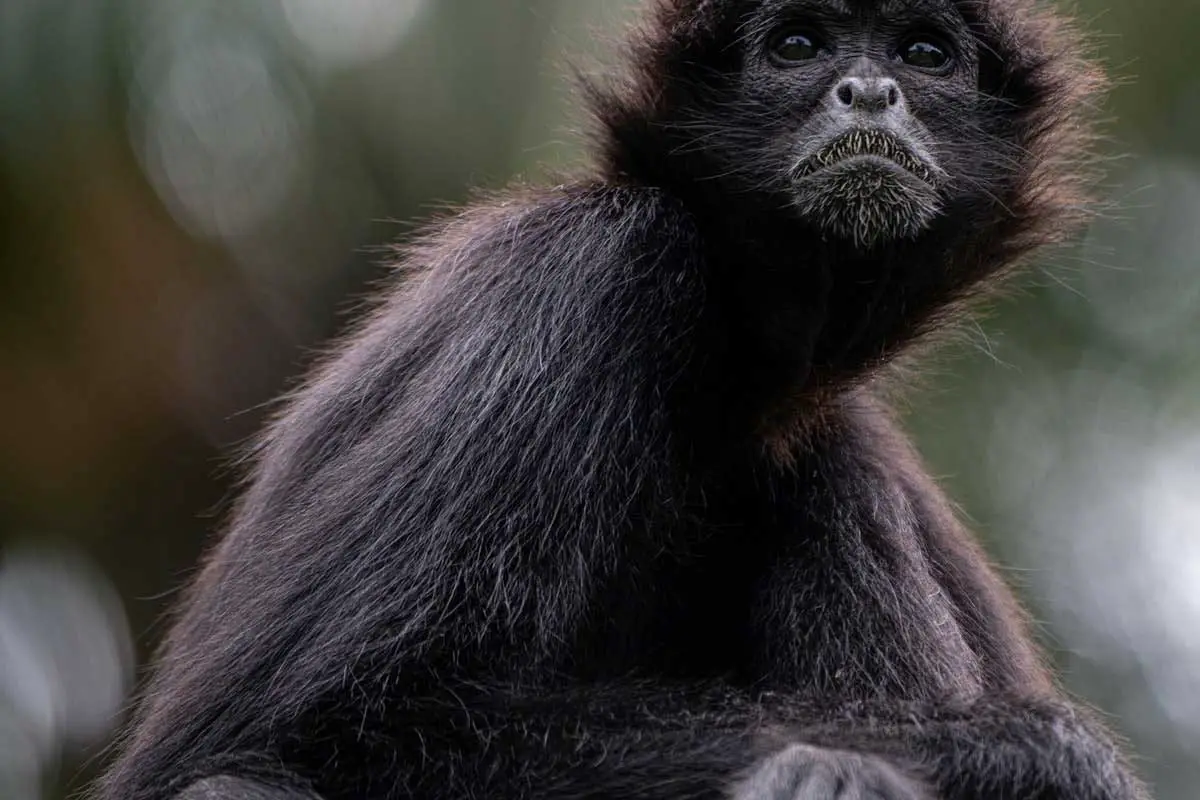
The Central American Spider monkey (Ateles geoffroyi) is also known as Geoffrey’s spider monkey and black-handed spider monkey.
They’re found in the coastal areas of Mexico and the northwestern regions of Columbia.
Spider monkeys are best with their hands amongst primates, actually best in the world!
Behavior
Spider Monkeys are blessed with long prehensile tails. Using it as an extra limb, they pick up fruit or hang from trees.
Poachers find them as easy targets as they make loud noises and shake trees whenever humans are close.
Spider monkeys are messy pets and create a lot of chaos. They need a lot of attention and can get fussy without proper care.
Diet
They can survive on fruits, but you can also give them eggs, seeds, nuts, flowers, and leaves.
Threats to survival
They are considered endangered because they are hunted as pets and due to deforestation and habitat loss.
32. Pygmy marmoset – Smallest type of monkey on the planet!
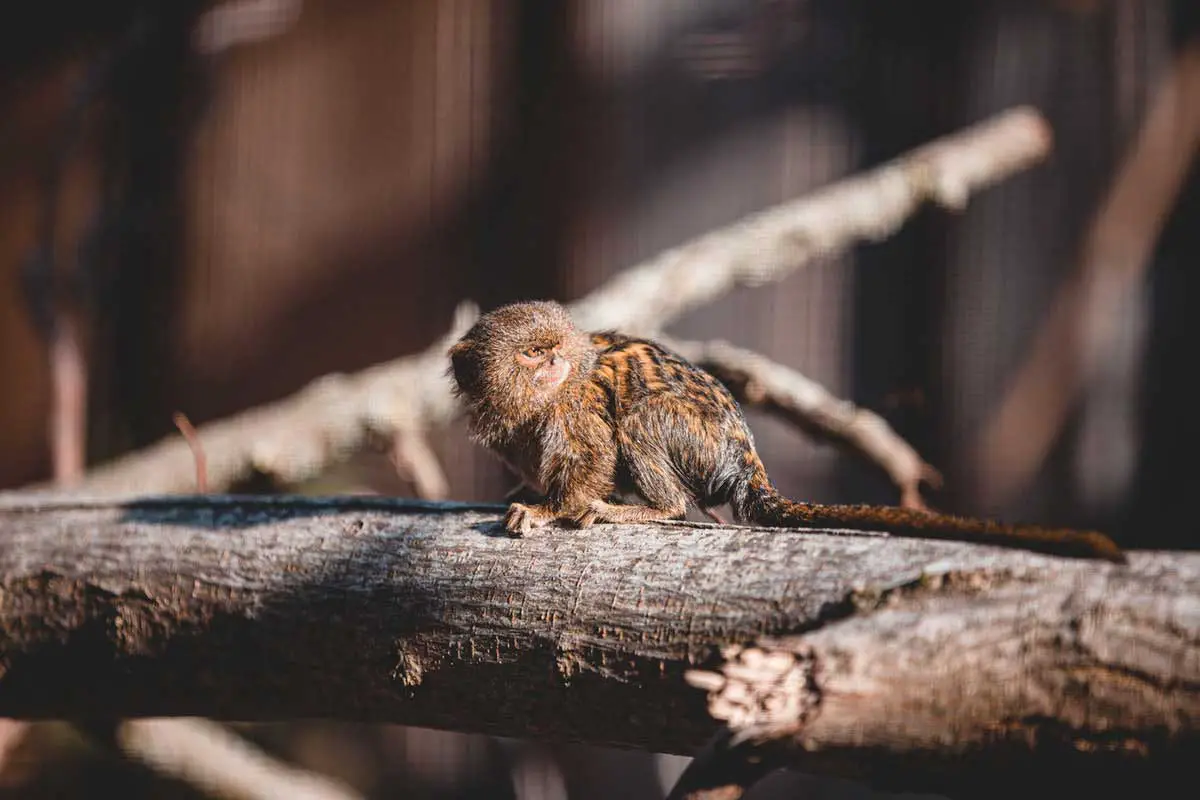
The pygmy marmoset or Callithrix pygmaea is the smallest type of monkey on the planet.
Behavior
Pygmy marmoset loves to live in rainforests (habitat) with lots of hiding places. They are very loud and will scream and yell when they’re not satisfied.
However, a lot of people keep them as pets with care and patience. And they are suitable for small spaces.
Diet
Pygmy marmoset’s diet includes everything from flowers, fruits, insects, and small vertebrates.
Threats to Survival
Some consider them endangered because they can easily become the prey for cats, snakes, and hawks.
33. Crab-eating Macaque
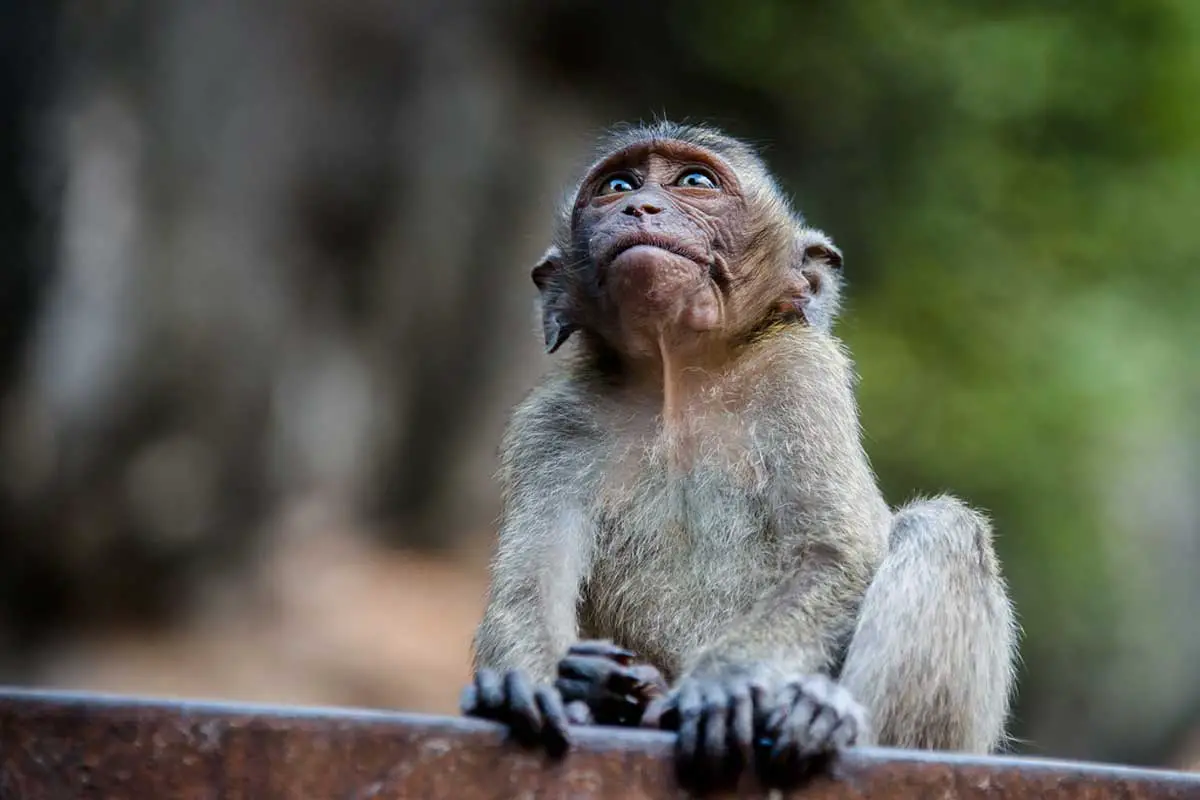
These macaques aren’t crab-eaters. They live in southeastern Asia, around the Philippines and Indonesia where they indulge in fresh fruit.
Behavior
They are social beings with emotional personalities. They are also considered pests in densely populated areas. They need large spaces and will need to wear diapers for their whole life.
The social group of Crab-eating macaques is said to engage in fights but also reconcile soon after. They have long been used for research purposes by scientists.
Diet
Crab-eating macaques actually eat small birds, crabs, seeds, leaves, nuts, frogs, fruits, and lizards.
Threats to survival
Being eaten or hunted by humans and the loss of forest habitats is causing their population to decline.
Conclusion
While it is intriguing to keep monkeys as pets, they are best left in their natural habits.
It needs a lot of resources and effort to take care of a pet monkey.
Some types of monkeys that can be kept as pets have a life span of over 40 years! It can be a huge commitment to look after them.
Difference between Monkeys and Apes

Monkeys and apes look alike. When you look at a marmoset or a gibbon, can you tell them apart?
Well, both monkeys are apes are primates, which means they are part of the larger human family tree.
You can differentiate between them by the absence or presence of a tail. Most monkeys have tails and apes don’t have one.
The body of an ape is different too. Monkeys are narrow-chested and smaller, while apes have broad chests and shoulder joints and are larger.
Apes can easily swing through trees due to their larger size. They are also more intelligent than their cousins.
While monkeys can also use gestures and sounds to communicate, apes have a more nuanced control of language, and trained apes have also been trained in sign languages.
Great apes like bonobo, gorilla, orangutan, and chimpanzee can be distinguished by their humanlike features and large size. The lesser ape species include gibbons and siamangs.
I really hope this guide is a valuable piece of information for those interested in knowing about the different types of monkeys.

